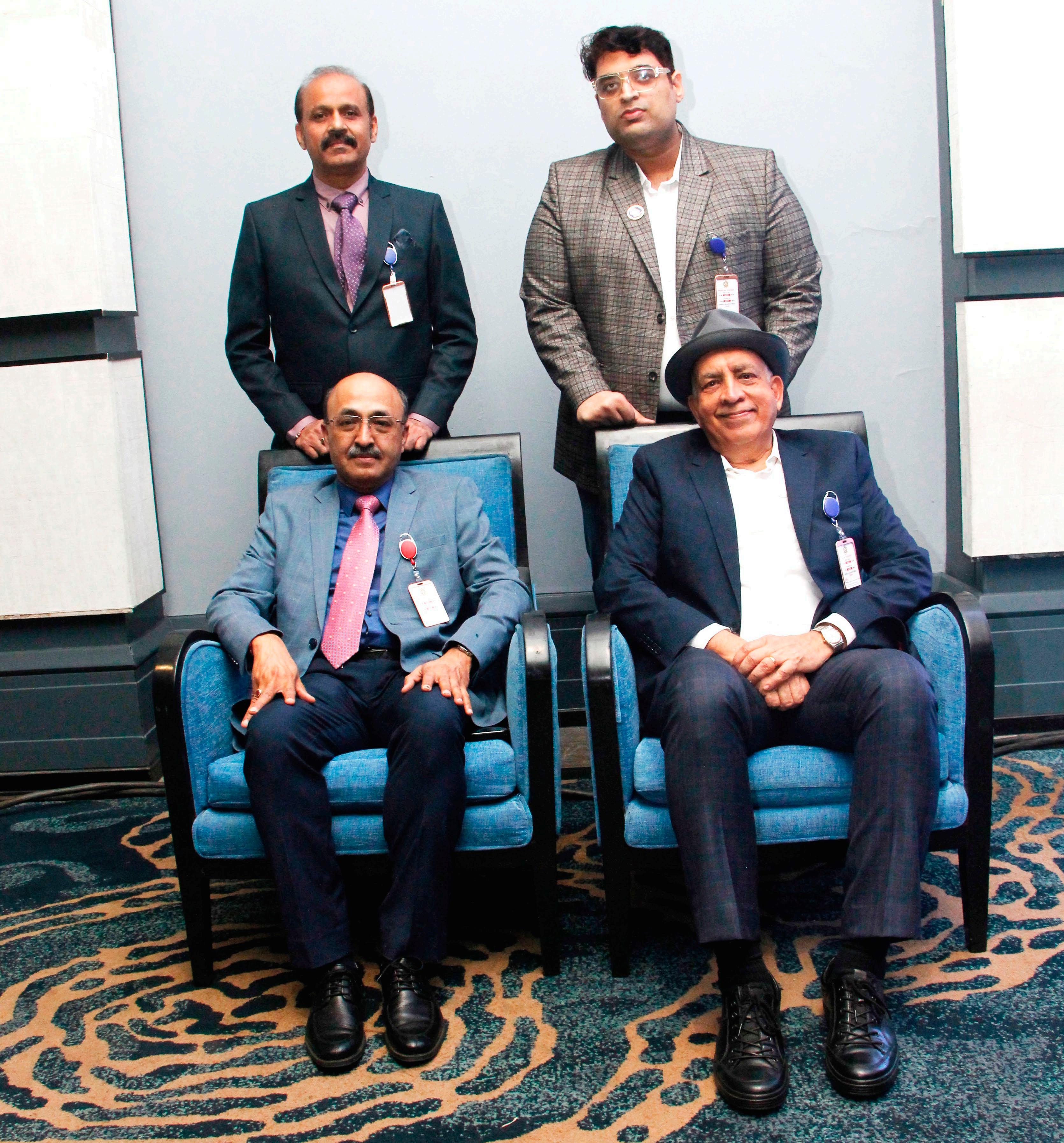
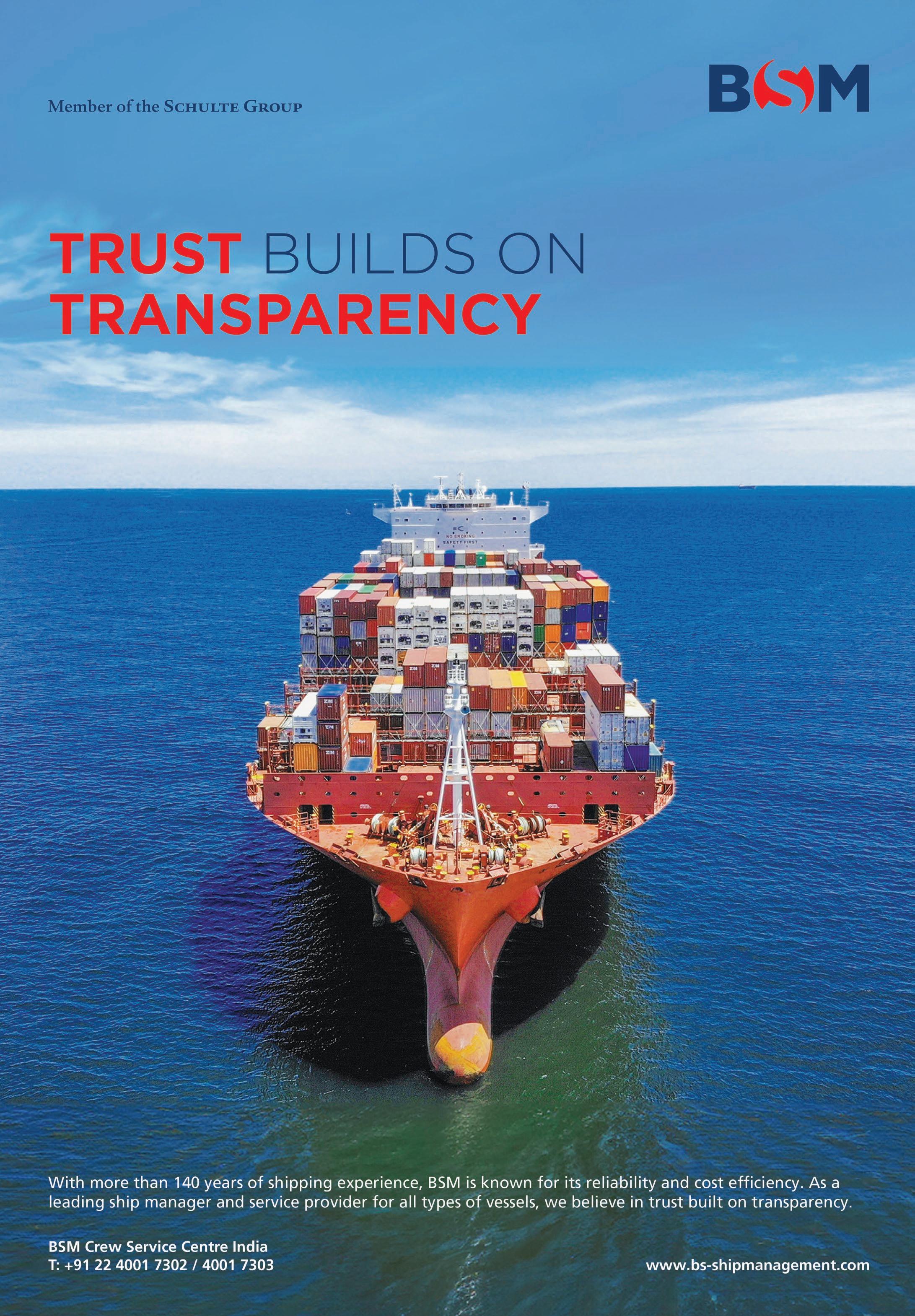
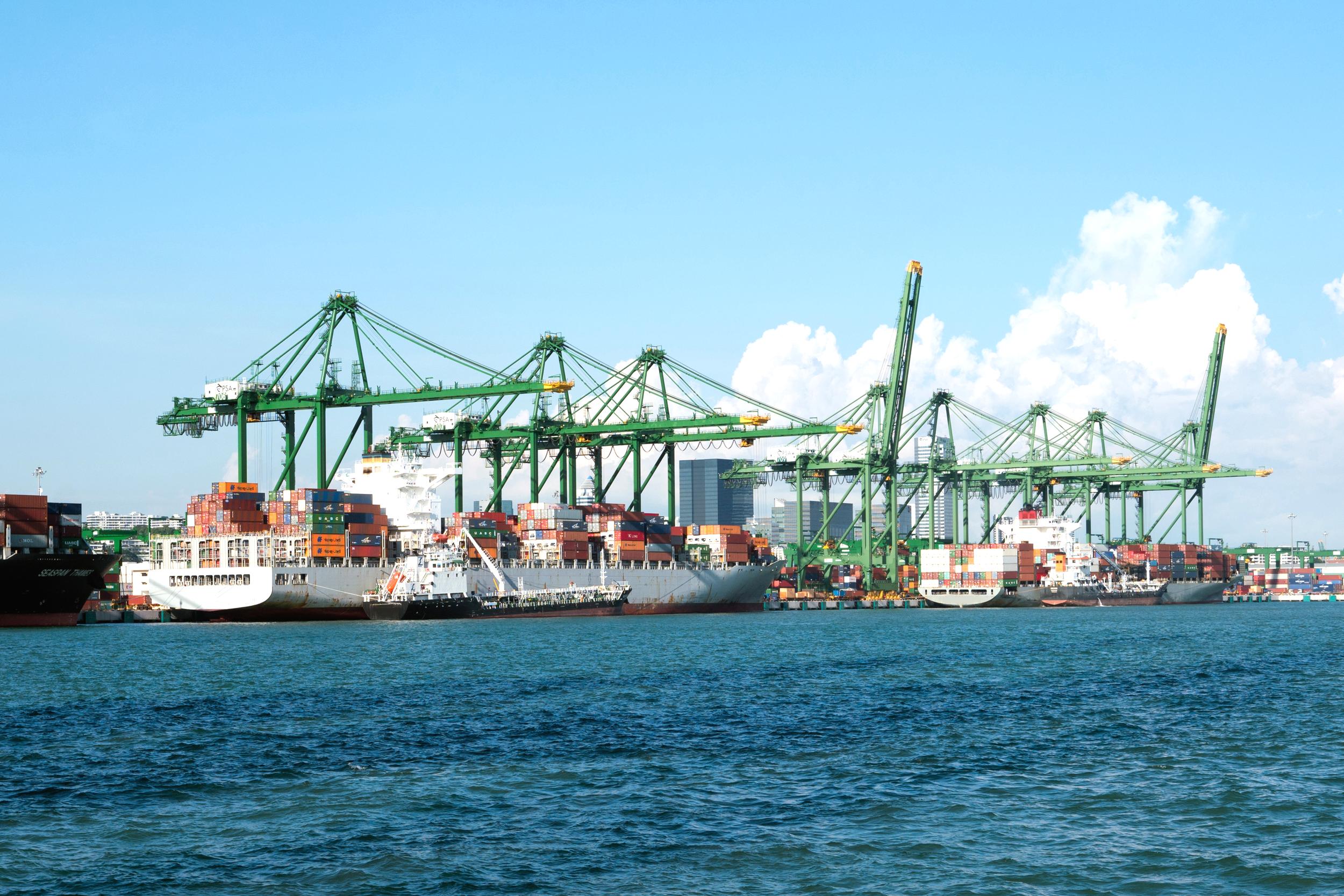
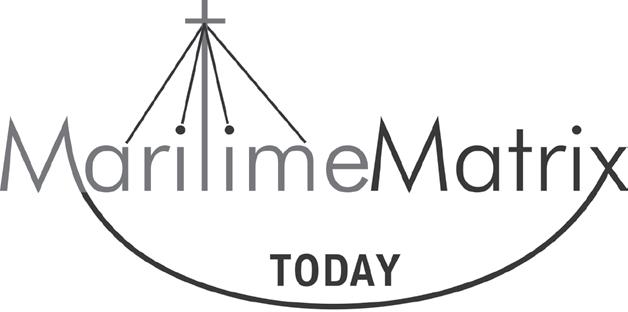





13 17 24
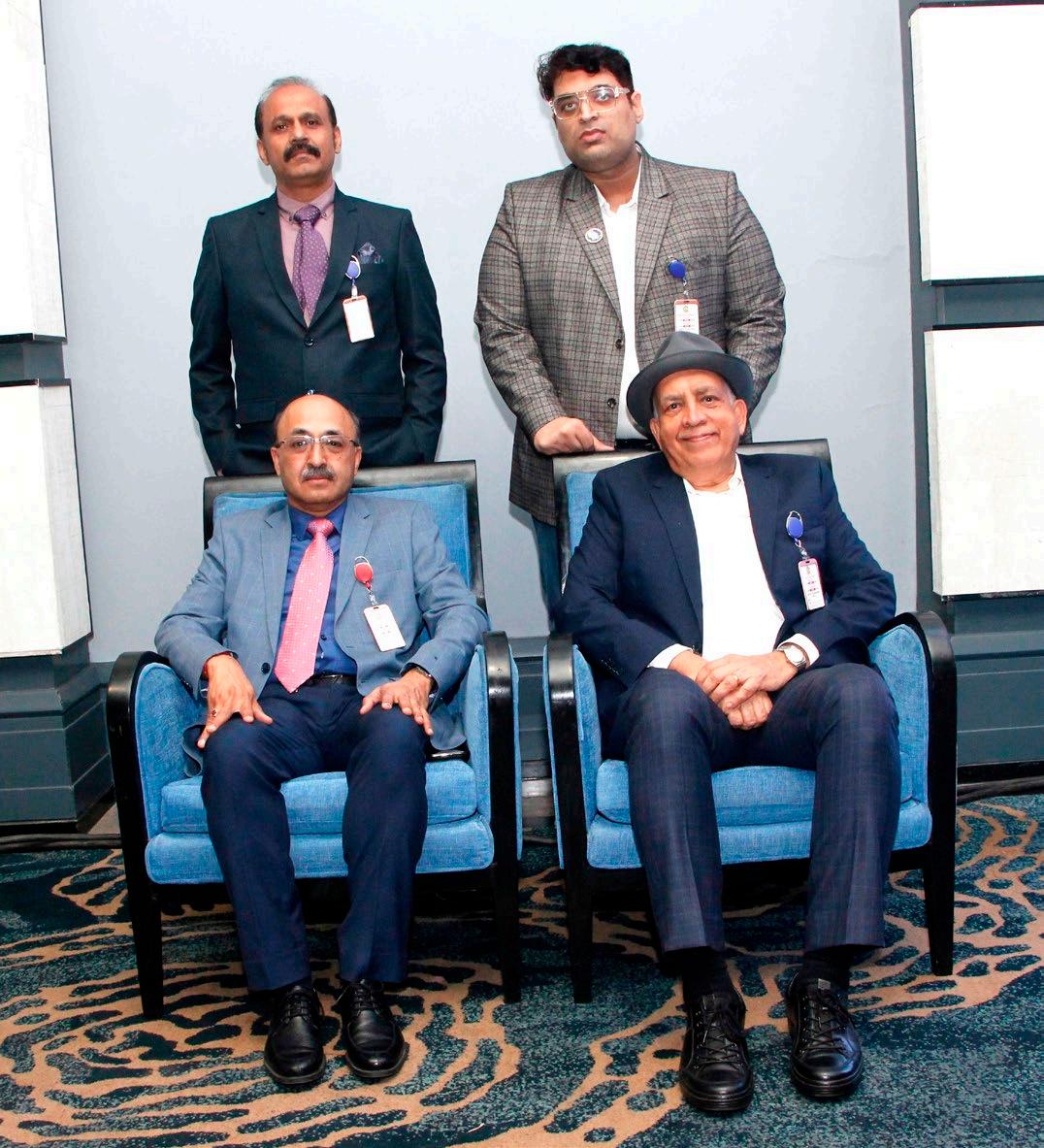
15
Disclaimer
The Age of Smart Seas: Regulating the Maritime Autonomous Surface Ships
31 35 Commercial DPA: A Necessity for 24/7 Vessel Management
Raising Awareness & Fostering Opportunities to Nurture Maritime Talent
What’s the Problem with the word MENTAL?
Cocktails, Conversations, and Connections: ATPI India & Turkish Airlines Shine Together
SAMPARCTransforming Young Lives
37
Aarohan 2025Bridging The Gap
All advertisements in this magazine are placed with no liability accepted by the publisher for the material content therein. No responsibility is accepted by the publisher for omission or error or non-insertion of any advertisements. All advertisements and material in this magazine are subjected to approval by the publisher and are not necessary the opinion of the publisher. No liability is accepted for advertisements that are placed or any information that might be criminally connected. All information is checked to the best of our knowledge and is reliant upon the material submitted not being in contravention of all relevant laws and regulations and within the provisions of the Trade Practices Act.
Reproduction Prohibited
Maritime Matrix Today will not be responsible for the views expressed by contributors in their personal capacity. All rights reserved. Reproduction in part or whole without the permission of the Editor is prohibited.
Readers are recommended
To make appropriate enquiries before sending money, incurring expenses or entering into any commitment in relation to any advertisement published in this publication. Maritime Matrix Today does not vouch for any claims made by the Advertisers of Products and Services. The Printer, Publisher, Editor and Owner of Maritime Matrix Today shall not be held liable for any consequences, in the event such claims are not honoured by the Advertisers.
RNI: MAHENG/2013/50159
Published by Marex Media Pvt Ltd C-209, Morya House, New Link Road, Andheri West, Mumbai 400058
Email: info@marexmedia.com
Printed by Young Graphics Printed at Young Graphics, 208 Shankala Industrial Premises, Gogatewadi, Goregaon(E), Mumbai-400 063

The National Logistics Policy (NLP) seems to have made significant progress with the Network Planning Group, which includes heads of the planning divisions of various infrastructure Ministries, convening 83 meetings so far, during which 228 projects (MNRE – 1, MoHUA – 12, MoPNG – 4, MoPSW – 3, MoR – 85, MoRTH – 108, NICDC – 12, MoCA-3), with an estimated cumulative cost of `15.89 Lakh Crore, have been evaluated.
Moreover, despite the current challenges, India’s shipping & logistics sector is evolving rapidly, propelled by government policies, infrastructure development, and the rise of e-commerce.
To name some, the government’s ambitious Sagarmala project, designed to boost port-led development by enhancing port connectivity and improving coastal shipping is under rapid progress. Digitalization and automation are revolutionizing the shipping logistics industry, with data analytics enhancing decisionmaking, while blockchain offers greater transparency and security in logistics operations.
The Service Improvement Group (SIG), established with the involvement of 36 business associations in the field of logistics is looking equally effective; so far 15 SIG sessions have been held and of the 126 issues received, 71 issues have been successfully resolved.
Aligning with the NLP, 26 States/UTs have notified their respective State Logistics Policies, followed by 19 States/UTs having already allotted Industry status to the ‘Logistics’ sector.
Sectoral Plans for Efficient Logistics (SPEL) is being developed to address the sector-specific needs and streamline the movement of bulk and break-bulk cargo. SPEL for Coal has been notified, and finalized for the Cement sector.
PM GatiShakti National Master Plan (NMP) for multi-modal connectivity has played a crucial role in identifying last mile connectivity gaps and intersections, with the existing as well as upcoming physical infrastructure, such as pipelines, OFC cables, roads, and rail crossings, as well as social, economic, and logistic nodes.
Further, to enhance education and skill development, Logistics-related courses have been introduced in over 100 universities/institutions, led by an E-MBA program at the prestigious IIM, Mumbai.
Unified Logistics Integrated Platform (ULIP) has integrated 34 logistics-related digital systems /portals across 11 Ministries / Departments streamlining the process of ease of doing business in the logistics sector. For tracking and tracing 100% of India’s containerized EXIM cargo, the Logistics Data Bank (LDB), has been developed too.
India is also seeing the rise of multi-modal logistics parks and integrated warehousing hubs, which are key to reducing transit times and costs. The adoption of electric vehicles (EVs) for freight transportation is another area of rapid improvement.
With strategic investments being made in infrastructure, national waterways, and technology, and a push to policy reforms, the sector is definitely poised for substantial growth in the coming years, and perhaps that’s the reason Union Minister Nitin Gadkari is confident that in two years’ time India’s logistics cost will fall to 9% from the current 14%.
Jai Bharat!
Kamal Chadha Group CEO Maritime Matrix Today
Kamal Chadha Group CEO
Shirish Kirtane HOD Graphics
Radhika Vakharia CEO
Santosh Nivalkar Sr. Graphic Designer
Padmesh Prabhune Editor
Manish Malve Graphic Designer
Delphine Estibeiro Editorial Coordinator
Bhavna Pimpale Coordinator
Jagdamba Pandey Manager, Bussiness and Promotion

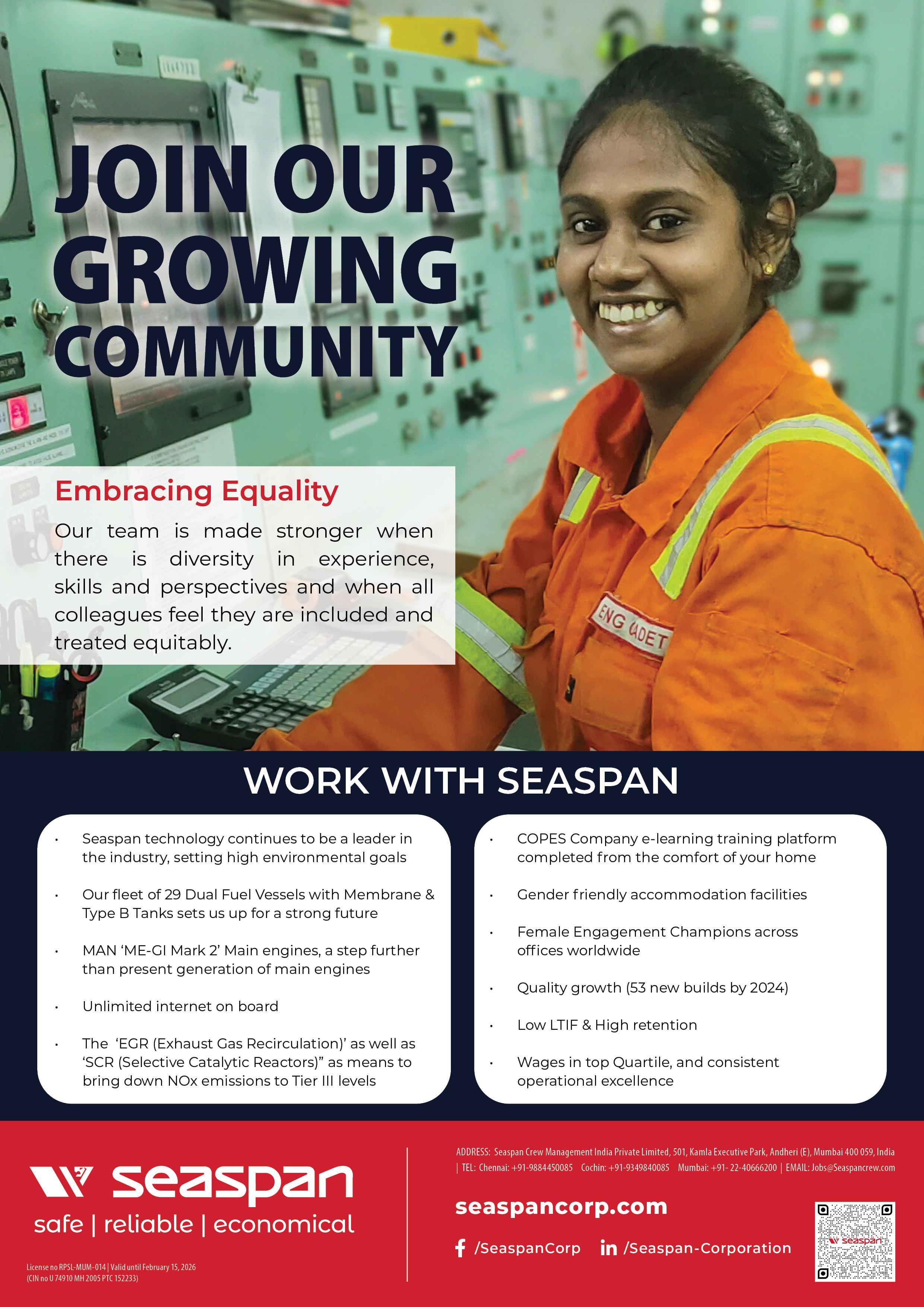


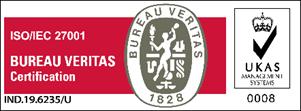

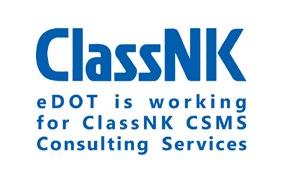
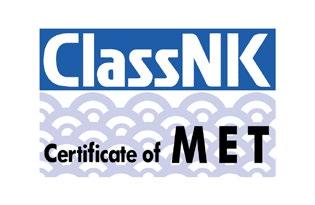

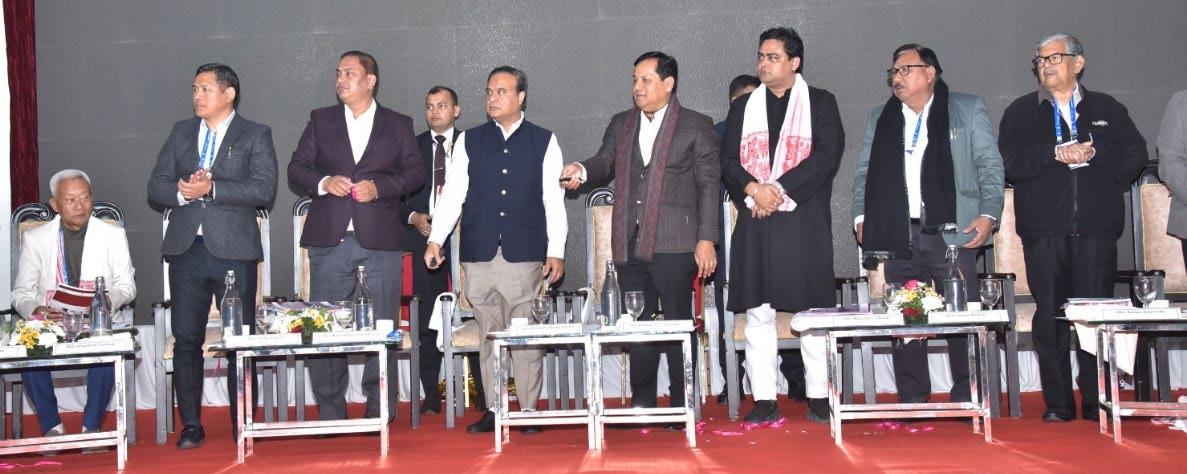
The Inland Waterways Development Council (IWDC) held its second meeting to announce a major investment plan of over INR 50,000 crore for infrastructure development across national waterways over the next five years. A series of new initiatives across 21 Inland Waterway States were announced worth more than INR1400 crore, on the occasion. Organized by the Inland Waterways Authority of India (IWAI),
the initiative aims to promote the growth of inland water transport. Union Minister of Ports, Shipping & Waterways, Shri Sarbananda Sonowal, chaired the meeting. Additionally, the Riverine Community Development Scheme was introduced to improve coastal communities’ socio-economic conditions by upgrading infrastructure, trade, tourism, and river ecosystems, benefiting communities along National Waterways.
The Indian government plans to implement a three-year subsidy program for cargo owners who transport goods via inland waterways. The aim is to increase freight movement, which currently makes up just 2% of the total logistics in India. The proposed subsidy of 35% will cover national waterways 1, 2, and 16, potentially shifting 800 million tonne-kilometers (tkm) of cargo to these routes. The inland water transport sector, still in its early stages, faces high logistics costs due to its multimodal nature. The government seeks to reduce these costs and boost the sector’s growth through targeted support.
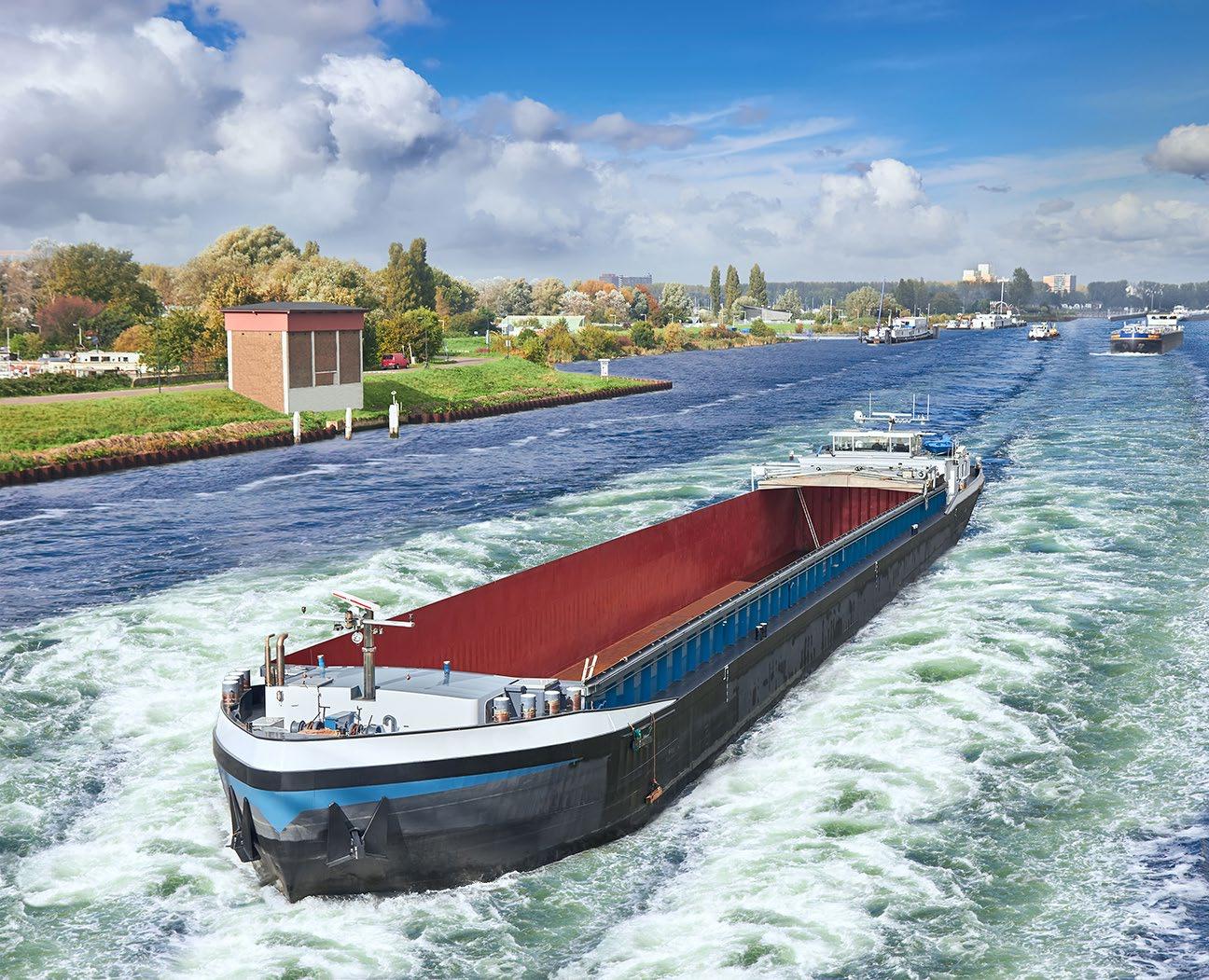
Under the Italy-India Joint Strategic Action Plan 2025-2029, both countries are working to enhance maritime cooperation, with a focus on the India-Middle East-Europe Economic Corridor (IMEEC). The plan emphasizes the ‘Cotton Route,’ linking Italian and Indian ports for better trade, defense, and blue economy integration. High-level visits to New Delhi and Mumbai saw policymakers from both sides discussing this partnership. The collaboration aims to boost sustainable transport, maritime infrastructure,
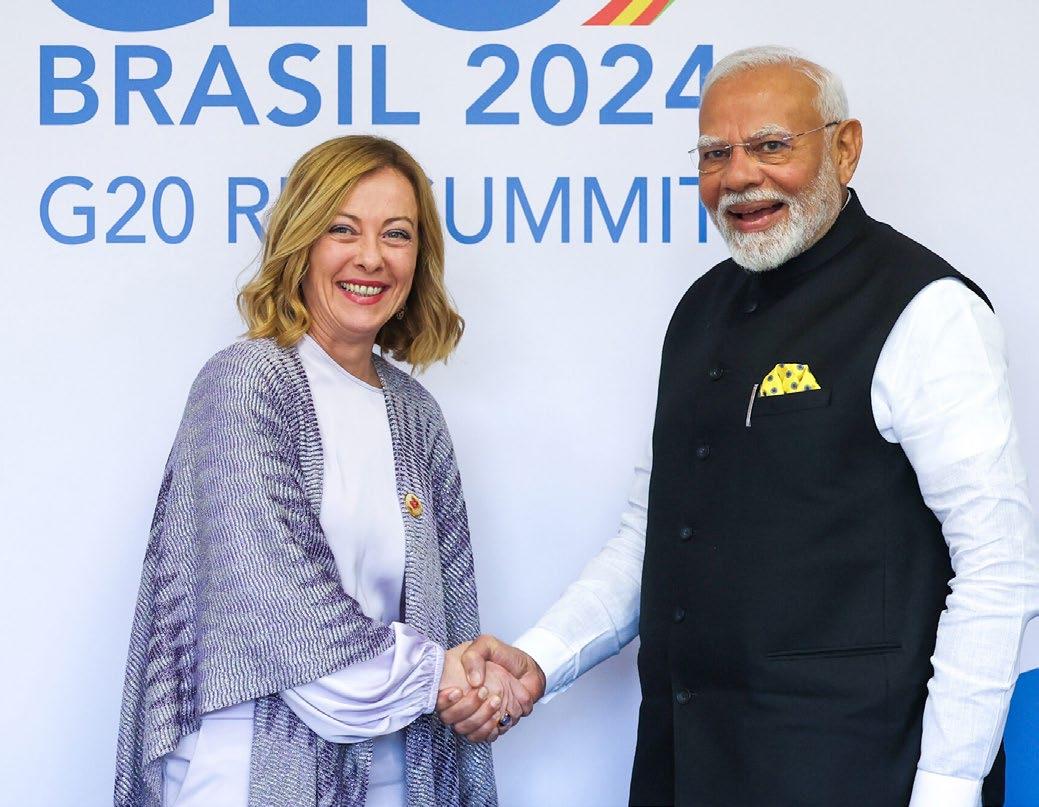
defense, technology, and energy transition. It also focuses on improving bilateral cooperation in areas like innovation, space, culture, migration, and tourism.
The MV Trishul, with barges Ajay and Dikshu, successfully completed its maiden voyage under the Jalvahak scheme. The vessel transported 1,500 tonnes of cement from Kolkata to Pandu through the Indo-Bangladesh Protocol Route. This initiative encourages longhaul cargo movement on National Waterways 1, 2, and 16, covering key rivers like Ganga,
Brahmaputra, and Barak. Union Minister of Ports, Shipping & Waterways, Sarbananda Sonowal, hailed the milestone as pivotal for India’s inland water transport. The scheme aims to alleviate congestion on rail and road networks by offering a cost-effective and environmentally-friendly alternative for cargo transportation.
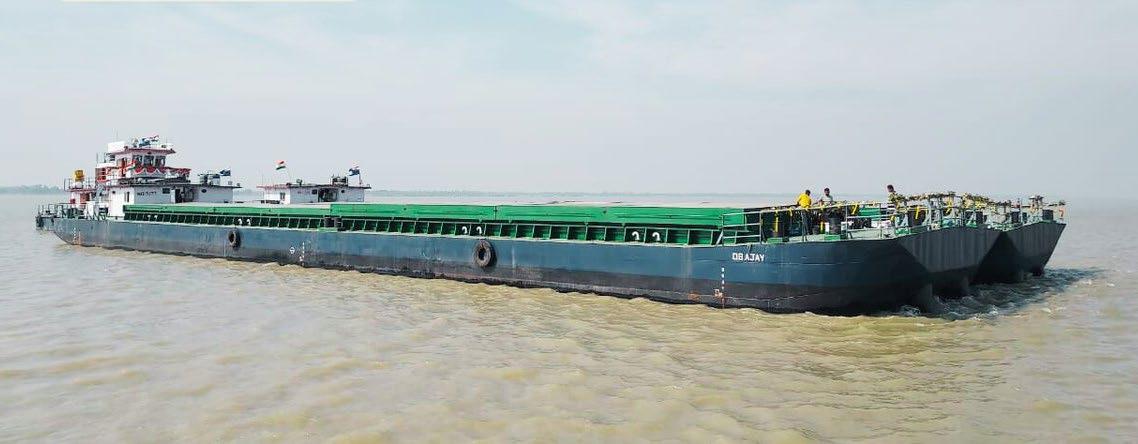
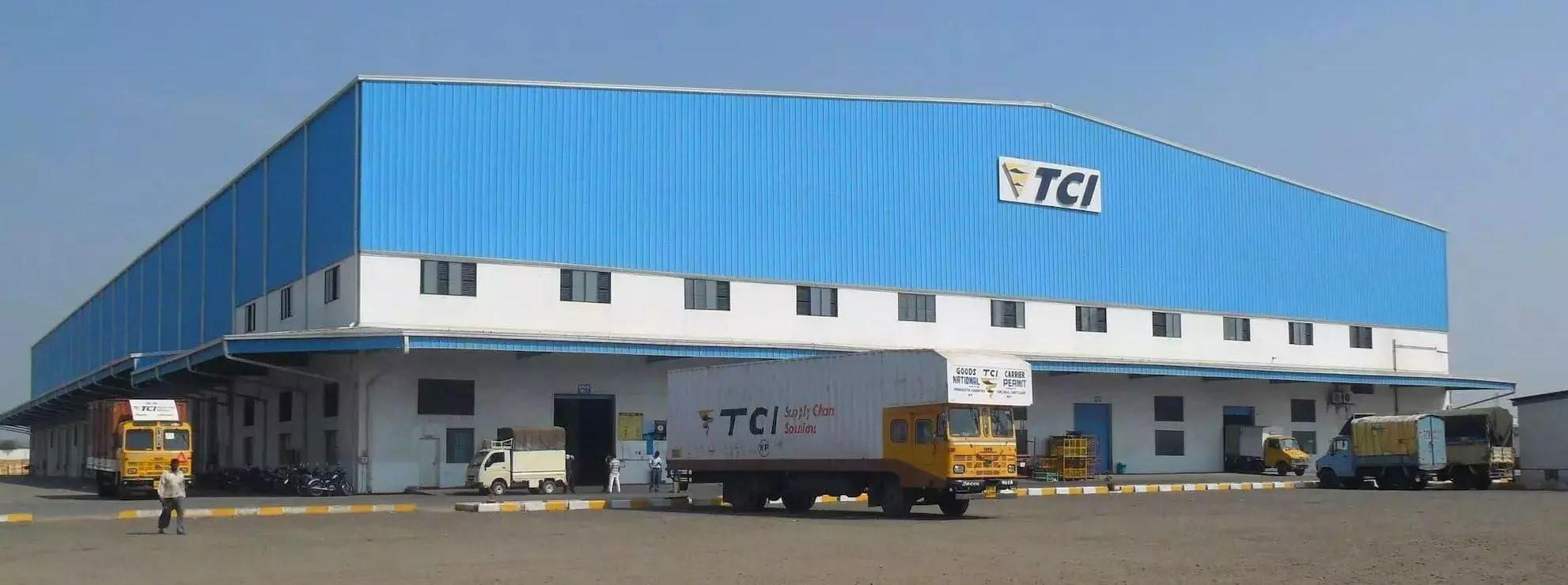
Transport Corporation of India (TCI), a major player in multimodal logistics, has integrated with the Open Network for Digital Commerce (ONDC), becoming the first B2B logistics provider to go live on the platform. It is the first B2B logistics player in the country to go live on the network. Managing Director Vineet Agarwal emphasized that this integration marks a transformative step
Pin revolutionizing logistics through cutting-edge technology and improved connectivity. The ONDC initiative, supported by the government, aims to democratize digital commerce by providing an open and inclusive digital network for buyers and sellers. By joining ONDC, TCI will improve supply chain operations, reduce costs, and expand market access, particularly for MSMEs.

rime Minister Narendra Modi inaugurated the new Cherlapally Terminal, developed at a cost of INR 413 crore, to ease congestion at Secunderabad, Hyderabad, and Kacheguda stations. With nine high-level platforms and modern amenities, the terminal will handle 50 trains daily in its initial phase, connecting destinations like Delhi, Visakhapatnam, Chennai,
and Kolkata. The terminal’s strategic location near the Outer Ring Road is expected to drive regional development. It will alleviate travel burdens for around 50,000 passengers and help streamline operations, showcasing India’s push towards modern, sustainable infrastructure to cater to growing transport demands.

The Author Capt. Sury Pullat Consultant, AUMNI Shipping & Founder-President, AMICIE
Apart from the Designated Person Ashore (DPA) for ISM (International Safety Management) and the Security Officer for ISPS (International Ship and Port Facility Security), there should also be a commercial contact available from management to serve all time zones for vessels engaged in trade, particularly under Charter Chains. This is especially true for tankers, as Box ships and Bulkers tend to be easier to manage in comparison.
Consider a story shared by a student while teaching: An email was received at 0400 hours aboard a vessel, instructing the loading of a specific quantity of oil cargo. At the time, the crew was busy with the topping-up operation early in the morning. Unfortunately, the email was not seen by the responsible management/operators (using the STCW term) until they could look away from the operation. As a result, the extra cargo was loaded and, for various commercial reasons, had to be discharged at the same terminal. This led to the charterers off-hiring the vessel for 8 days.
This scenario highlights the critical need for smooth, continuous communication and the ability to manage commercial pressures, particularly when ships are operating across multiple time zones. Modern communication
systems, though far more efficient than those in earlier generations, still require that contracts be executed and fulfilled professionally, avoiding foreseeable glitches that may arise in the market or in the course of Charter Party agreements.
Numerous case laws, experiences, and stories from chartered trade could be cited, but there isn’t enough space here to explore them all. However, the essential takeaway is the proven performance of contracts and the importance of leaving no room for disputes or ambiguity. It’s about ensuring contracts are executed with clarity, minimizing the possibility of misunderstandings that can lead to unnecessary complications.
When ship managers are involved in the commercial aspects of ship management—whether by default or due to unforeseen circumstances—the resulting actions and outcomes can be quite different from those in more conventional arrangements. Ship owning is, after all, a basic investment portfolio, even within the liner sector of box trades, where most operations are subcontracted and risks shared.
Time Charterers, who have the right to give instructions to Masters (the alter ego of the ship), must be keenly aware of this authority. Masters must always be prepared to carry out operational

instructions, especially when commercial circumstances dictate.
Problems often arise when the commercial contact interface between parties is unclear or not explicitly defined in contracts. Time zone differences and the plausible delays they cause can complicate matters, particularly in the tanker industry. In tanker trades, numerous stakeholders—owners, managers, traders, sellers, shippers, buyers, receivers, and terminals—are involved, often at every step of the process. Effective communication and synchronization across all parties, from the outset and throughout the process, are essential.
The role of independent parties, regardless of their employer, in mitigating issues and soothing tensions is a key lesson. These roles are critical, as they help maintain the smooth functioning of operations, ensuring that everything proceeds as planned.
While the immediate issue might involve offhire periods and deductions, the longer-term concern is the preservation of reputations. In tanker trades, this is especially important due to inspections, vetting procedures, and the evolving SIRE2 (Ship Inspection Report Programme)
standards. Though it is possible to manage issues post-event, the focus should be on avoidance— proactively preventing such issues from arising in the first place.
As it stands, there is no formal requirement to create a dedicated Commercial DPA position, as ship managers often handle these responsibilities, aided by Marine and Technical Superintendents. However, with the increasing frequency of challenges arising from commercial pressures and the lessons learned from past experiences, it may be time to consider budgeting for and training personnel specifically for this role, even if it remains manageable within the current headcount.
The shipping industry, particularly in tanker trades, faces many challenges due to the complexity of commercial operations, the need for effective communication, and the varying time zones across different regions. As the industry continues to evolve, ship managers must be prepared to address these challenges with a proactive approach, ensuring smooth operations and maintaining reputations.
MMT

The Author Navodita Singh, LL.M. (Maritime Lawyer)
With current technological advancements, the emergence of automation in the maritime industry is no longer surprising. Ships can now be controlled remotely or even be fully automated. Given these developments, it is essential to establish legal regulations and frameworks to ensure the safety of life and property at sea, including both cargo and the vessels themselves.
To address this, the International Maritime Organization (IMO) is working on creating a legislative instrument specifically for MASS. The goal is to ensure that safety at sea, environmental protection, trade, and the welfare of seafarers are safeguarded, while simultaneously allowing technology to play a pivotal role in advancing the maritime sector.
The drafting of the MASS Code was initiated during the 105th session of the Maritime Safety Committee (MSC) of the IMO. The MSC had previously approved interim guidelines for MASS trials in its 101st session in June 2019. These guidelines emphasised that the trials must be conducted in a manner that upholds or exceeds the safety, security, and environmental protection standards set by relevant regulations. Any potential risks associated with the trials need to be thoroughly assessed, with effective measures implemented to minimise these risks to the lowest level that is reasonably achievable and deemed acceptable.
Personnel involved in MASS trials, whether they are remote operators or onboard crew, must possess the necessary qualifications and experience to ensure the trials are conducted safely. Additionally, comprehensive cyber risk management procedures should be established to protect the systems and infrastructure used during the trials.
Several critical issues have emerged during the discussions on MASS, spanning multiple instruments and requiring policy-level attention to guide future initiatives. These include the development of standardised terminology and definitions for MASS, including an internationally recognised definition of MASS, as well as clarification of terms like “master,” “crew,” or “responsible person”. Other significant concerns involve addressing the functional and operational requirements for remote control stations/centers and determining whether a remote operator should be classified as a seafarer.
Additionally, several recurring gaps and themes across safety treaties were identified, such as provisions related to manual operations and alarms on the bridge, actions by personnel (e.g., firefighting, cargo stowage, securing, and maintenance), watchkeeping responsibilities, implications for search and rescue operations, and the information necessary to ensure safe vessel operation.
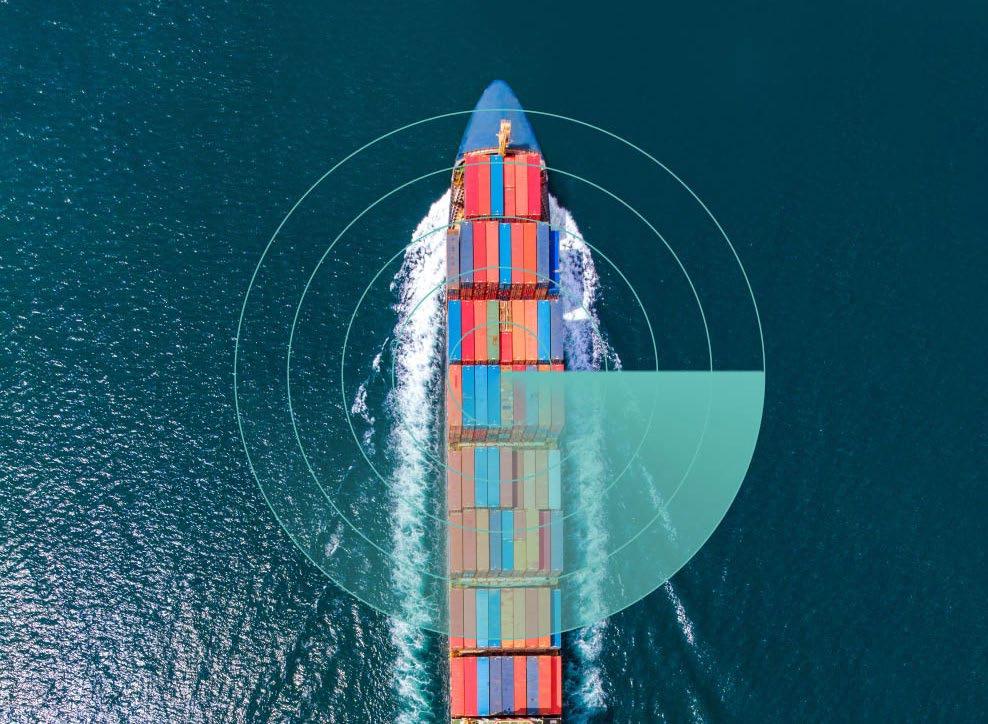
There are also several unresolved legal and operational questions surrounding automated ships, particularly regarding their classification under UNCLOS as sea-going vessels, specially when there is no crew on board. Additionally, there are concerns about whether automated systems can handle exceptional situations requiring human judgment, such as collision avoidance and pollution response. The liability of manufacturers for malfunctions in automation systems also remains unclear, particularly in relation to existing limitation of liability regimes.
The MSC is reviewing existing instruments to accommodate MASS, including those covering Safety and Maritime Security (SOLAS), Collision Regulations (COLREG), Loading and Stability (Load Lines), Training of Seafarers and Fishers (STCW, STCW-F), Search and Rescue (SAR), Tonnage Measurement (Tonnage Convention), Safe Containers (CSC), and Special Trade Passenger Ship Instruments (SPACE STP, STP). The Facilitation Committee has determined
that the Facilitation of Maritime Traffic (FAL) Convention can largely support MASS operations without major changes.
The Legal Committee found that MASS can fit within existing legal frameworks, but some conventions may require adjustments. Another key issue is that while the United Nations Convention on the Law of the Sea (UNCLOS) is not part of the Legal Committee’s review, it will be relevant for MASS operations.
Only time will reveal how these legal frameworks are established, implemented, and aligned with other legal instruments, not only by the IMO but also by States incorporating MASS.
- Dr. Radhika Vakharia
The term “mental health” has become ubiquitous in discussions about well-being, especially with growing concerns about the same in sectors like maritime. Yet, this term carries with it subtle drawbacks that can affect how we perceive and address emotional and psychological issues. Its meaning and implications vary widely, especially in high-context cultures such as Japan, China, Saudi Arabia, and Brazil.
Edward T. Hall, an anthropologist and pioneer in intercultural communication, developed the Theory of Context in Cultures, which categorizes cultures as high-context or low-context.
In high-context cultures, communication relies heavily on implicit understanding, non-verbal signals, and the social and relational context of interactions. In contrast, low-context cultures favor direct, explicit communication that focuses primarily on the content of the message itself. The term “mental health” is interpreted and addressed differently in each of these cultural frameworks.
In high-context cultures, the term “mental health” is often met with mixed reactions. Let’s explore some of these responses:
High-context cultures place a strong emphasis on social harmony and discretion. As a result, “mental health” may be stigmatized or considered a private matter that should not be publicly discussed. Individuals in these cultures might hesitate to acknowledge or seek help for mental health issues due to fears of social judgment or damage to family reputation. As such, a reluctance to engage in open conversations about mental health can be observed.
Rather than using clinical terms like “mental health,” people in high-context cultures often approach emotional and psychological issues through more holistic or indirect terms. Concepts of balance, harmony, and emotional wellbeing are commonly used, reflecting a broader understanding of mental health that integrates social and familial context. This cultural framing is less about diagnosing a mental illness and more about maintaining equilibrium in one’s relationships and environment.
In these cultures, there is often resistance to medicalizing emotional struggles. Mental health may be viewed through a non-clinical lens, with individuals opting to seek guidance from family elders, spiritual leaders, or traditional healers instead of mental health professionals. This reluctance stems from the belief that emotional distress should be managed within the family or community rather than being subjected to clinical diagnoses or treatments.
In high-context cultures, there is a significant focus on how mental health issues affect social roles and relationships. The importance of restoring social harmony within the family or community takes precedence over individual diagnosis or treatment. In this framework, mental health is not an isolated issue but rather one that is deeply connected to the social fabric and relational dynamics.
The language used to discuss mental health in high-context cultures often differs from clinical or psychological terminology. Terms that emphasize

emotional stability, family harmony, or personal balance are more common than terms like “mental illness.” This reflects a broader, integrated approach to understanding well-being, one that takes into account cultural values and relational contexts.
One of the primary concerns surrounding the term “mental health” is the stigma attached to it. Often, it is associated with severe mental disorders, which can lead to a skewed perception that mental health issues are always serious or pathological. This stigma can discourage individuals from seeking help for more common emotional struggles, reinforcing the belief that only extreme cases deserve attention.
Furthermore, the term “mental health” can narrow our understanding of well-being to a medical or clinical perspective. This focus can inadvertently minimize the broader aspects of emotional well-being, emphasizing problem-solving and symptom management over fostering resilience, personal growth, or overall life satisfaction.
Additionally, the binary perspective of “health versus illness” can be limiting. It oversimplifies
the complexity of mental well-being and does not adequately address the social, cultural, or systemic factors that influence psychological health.
To address these limitations, it might be helpful to adopt terms like “emotional well-being” or “psychological resilience.” These terms encompass a wider range of experiences and foster a more holistic approach to mental health. By expanding our vocabulary, we can better support individuals in their journey toward balance, fulfillment, and overall well-being.
In summary, high-context cultures approach the concept of mental health with a blend of discretion, traditional practices, and a focus on social and relational aspects. This culturally sensitive approach prioritizes holistic well-being and social harmony over individual diagnosis and clinical treatments. Shifting our language to reflect a broader, more integrated understanding of emotional health can help challenge stigma, promote resilience, and better support individuals on their path to mental well-being.
-MMT
Founded in 1949 by the Government of India ,the Directorate of Marine Engineering Training (DMET) had two of its most acclaimed institutes situated in the then Bombay and Calcutta.

In August 1947, the need for a large merchant navy was recognised. “The Merchant Navy Officers Training Committee” was then constituted and subsequently, in 1949, the Govt. of India created the Directorate of Marine Engineering Training (DMET), which had two institutes situated in the then Bombay and Calcutta.
The DMET in the then Calcutta (Kolkata) was later renamed Marine Engineering and Research Institute (MERI) in 1995 and is now under the realms of the Indian Maritime University - established in 2008; dedicated to providing education and training in various areas of maritime studies, including navigation, marine engineering, maritime law, and marine management, commonly referred as the IMU Kolkata campus.

DMECA organised a grand reunion of DMETian’s from across the globe with all fun and frolic celebrating the 76th year of success of its alma matter, further setting a robust foundation for their future endeavours
The alumni of the Indian Maritime University (IMU), previously known as DMET and MERI, have gone on to achieve remarkable successes in various industries, from maritime to digital transformation, leadership in logistics, and beyond. Every year these alumni meet once; not only to celebrate the success of its Alma Matter but to reinforce the core essence of their association: Giving Back.
This year the ‘DMECA Alumni Meet 2025’ was held recently on Saturday, 25th January 2025, in Mumbai that witnessed a huge presence of over 700 participants adding to the joy of the DMETians world over. The Tagline of the event


was “ DMETians ka Mahakumbh” and it was truly a gathering of the stature
Speaking exclusively to Maritime Matrix Today, Uday Purohit, President DMECA, says, “Our Alma Mater’s growth and its ability to navigate the ever-evolving challenges of the maritime industry are intrinsically tied to the contributions of its alumni. The lifeblood of DMECA has always been its alumni network—a vibrant force that drives innovation, inspires leadership, and uplifts the institution to greater heights.”
The Directorate of Marine Engineering Training (DMET), now a part of the Indian Maritime


University (IMU) Kolkata Campus, has been a cornerstone of maritime education since its inception in 1949. With a legacy of producing world-class marine engineers, DMET has played a pivotal role in shaping the global maritime industry. The institution is renowned for its rigorous training programs, modern facilities, and a distinguished alumni network that spans across industries such as shipping, logistics, and energy.
Over the decades, DMET alumni have excelled as leaders, innovators, and pioneers, contributing significantly to the maritime sector worldwide.
“This year, we gather once again, not merely to celebrate but to reinforce the core essence of our association: Giving Back. Over the past year, we have made significant strides in supporting our Alma Mater.”, Purohit adds.
In consultation with the Director, Pro ViceChancellor, and Vice-Chancellor, the core team identified critical areas of need and directed its efforts to enhance infrastructure and provide resources that would empower the next generation of marine engineers thus ensuring that the institution remains a beacon of excellence in marine engineering education.
“Yes, we are proud to continue supporting and connecting with our distinguished alumni

community. Our community is our strength, and we strive to foster a sense of belonging and camaraderie.”, says, Pradeep Singh, Vice President DMECA.
“At DMET Alumni Meet, we celebrate this rich heritage by fostering collaboration, networking, and knowledge-sharing among alumni. Our mission is to unite the DMET fraternity, creating opportunities for mentorship, professional growth, and lifelong connections. I sincerely appreciate everyone for contributing and making it a success”, says, Mudit Mehrotra, Secretary , DMECA.
He stated during his speech that today, DMECA has a dedicated office space of its own. The membership of DMECA has steadily grown in the last two years—from a time when we were contemplating the validity of the association’s existence, we are now more than 1,050 members strong and continuing to grow. In the past 12 months, DMECA has donated equipment and materials worth Rs 30 lakhs to the IMU Kolkata and Mumbai campuses—such as water coolers, fuel valve testing machines, liferafts, etc.
DMECA has also instituted two new awards for the Kolkata campus: Best Technical Paper and Best Technical Project. This is the second year these awards will be presented.
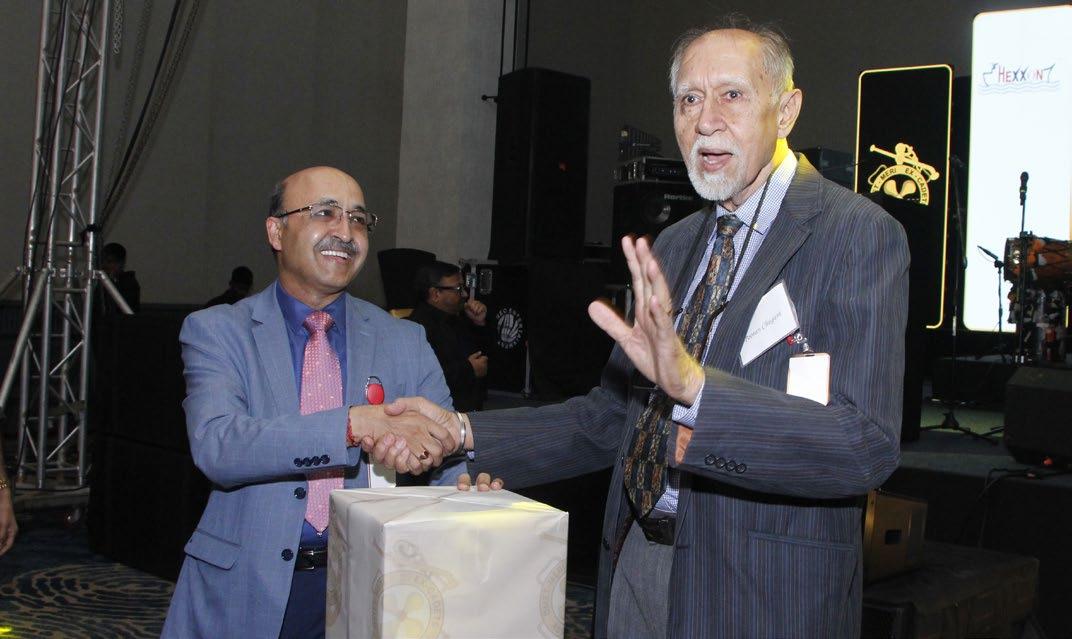

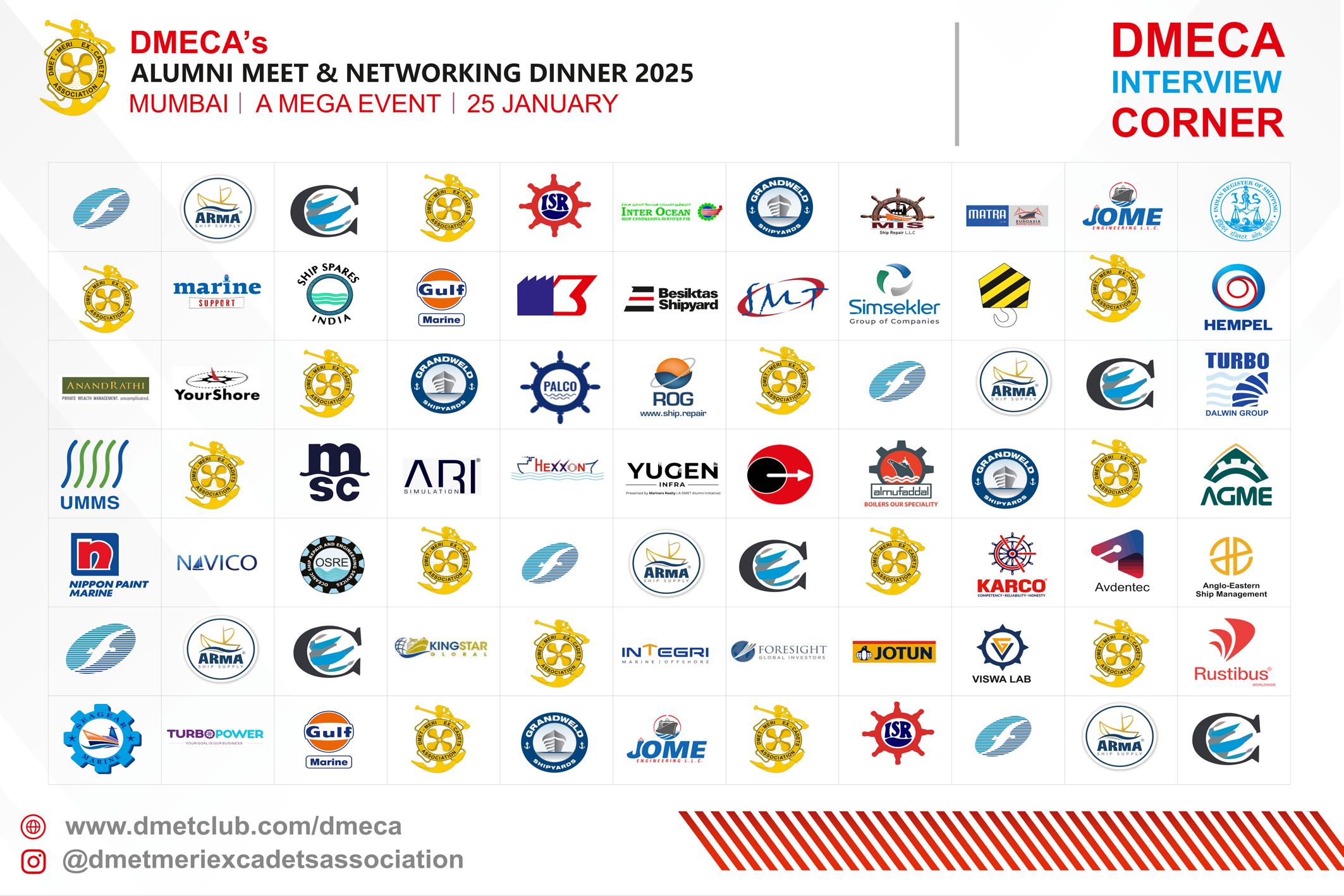
The Directorate of Marine Engineering Training of the Government of India was established in October 1948. Operations of DMET started in Mumbai and Kolkata on 10 August 1949. The present 34-acre campus at P-19 Taratala Road was inaugurated by Prime Minister Nehru on 14 December 1953. It catered for 84 apprentices in the four wings of the Apprentices Hostel and 80 Cadets in the Cadets Hostel.
Starting in 1963- 64, the intake was increased from 50 per year to 100 per year. The first batch to opt for the Graduate Marine Engineering (GME) course joined in 1975, with 40 cadets each in Mumbai and Kolkata. This was repeated in 1976. Thereafter, the GME batches were taken in Mumbai. While the initial four batches completed four-years tenure at Kolkata (1978-82, 1979-83, 1981-85, 1982-86), the annual intake was gradually increased from 100 to 120 in the year 1981.
Basking in its glory, in 1981 DMET witnessed admissions of foreign cadets with 10 Iranians
cadets. This was followed in 1982, with 6 Iranians and 4 Ethiopian cadets. The year after that, apart from the foreigners who stayed on campus, there were around 20 Iranians who stayed outside in their own hostel, and came for classes and activities to college.
The 4 Year course at DMET was recognized as equivalent to Bachelor’s Degree in Marine Engineering effective from 1983.
• The 4 Year course at DMET was recognized as equivalent to Bachelor’s Degree in Marine Engineering effective from 1983.
• The first main engine simulator was installed at Kolkata Campus in the year 1984.
• From 1989 onwards, there were a few GME batches, sponsored by the Shipping Corporation of India (SCI), that completed an eight-month pre-sea training course at Kolkata, and joined sea after obtaining Class II Part A exemption.
• DMET was renamed as the Marine Engineering Research Institute in 1993.
• It was in 1995, first young women cadet joined DMET, followed by two in 1998.
• DMET graduates received a Degree in Marine Engineering from Jadavpur University from 2003 to 2012.The Indian Maritime University was formed on 14 November 2008 by an act of Parliament.
• During the period 2010 to 2014, DMET Kolkata conducted four batches of DNS cadets training a total of 272 cadets in the Nautical stream.
• A Three -year Polyvalent BMS course was conducted at MERI Mumbai from 2003 to 2020, with a strength of 60 students per year.
• Beginning 2013, a Four-Year BTech course commenced at MERI Mumbai with an initial intake of 40 students per year.
Today DMET Calcutta is the IMU Kolkata Campus, which also includes the IIPM, Kolkata. Apart from the Four Year BTech (Marine) course, it has an MTech course, whereas the DMET Bombay is the IMU Mumbai Port Campus, with the LBS Nautical College conducting courses; Four-Year BTech (Marine), One Year PGDME, apart from the post sea courses.
The Kolkata Campus has been declared as a Centre of Excellence for Marine Engineering in accordance with the Maritime Vision 2030.
With improved infrastructure both the campuses have auditoriums, new hostels to cater for the increased intake, and state-of-the-art simulators and a host of other training equipment, laboratories and workshops to cater for upgradations in the syllabus.


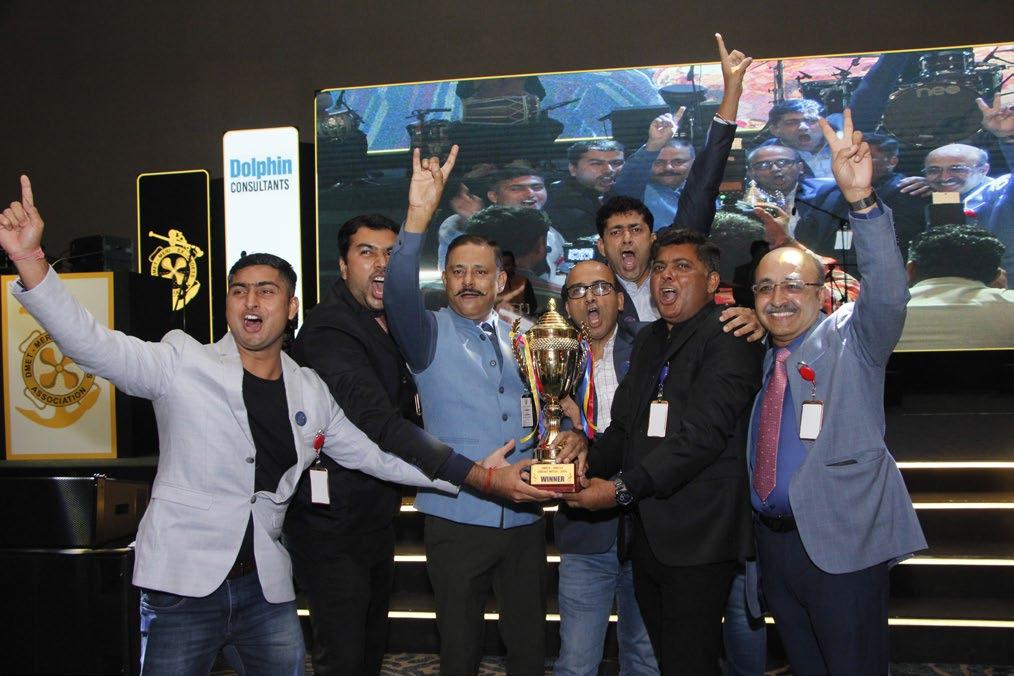


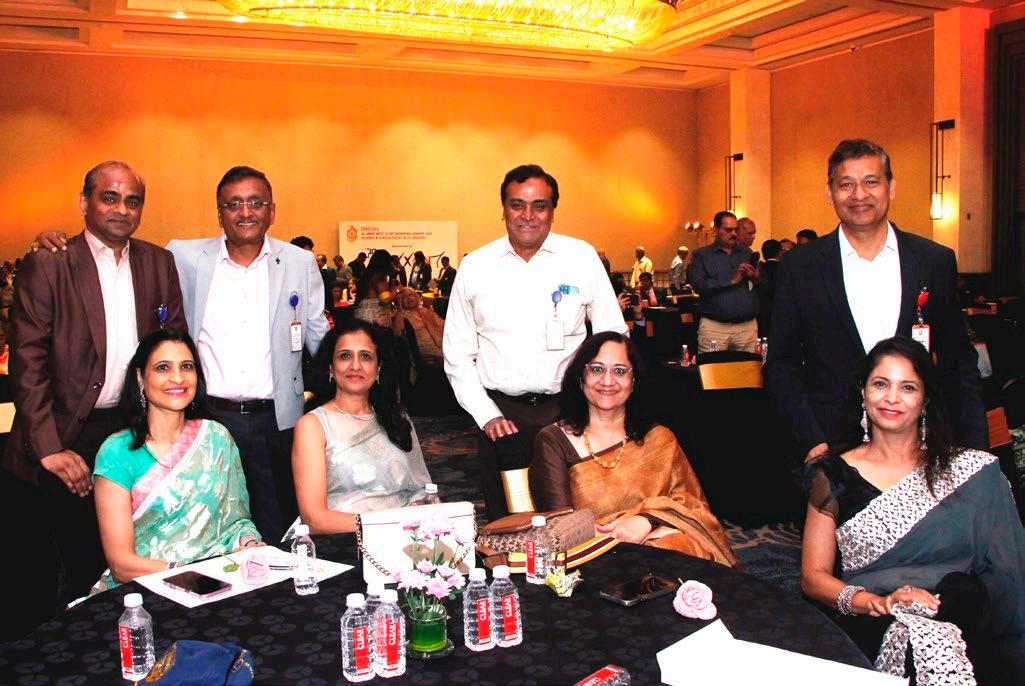

In a night of elegance and sophistication, ATPI India and Turkish Airlines joined forces to host an exclusive cocktail and dinner evening on December 13, 2024, at Hotel Mirage, Mumbai. The event, tailored specifically for esteemed Marine and Corporate clients, was a resounding success, bringing together like-minded individuals and fostering meaningful connections.
As guests arrived, they were treated to an exquisite evening of fine cuisine, refreshing cocktails, and engaging conversations. The atmosphere was electric, with the sleek ambiance of the hotel providing the perfect backdrop for networking and socializing. The highlight of the night was the showcase of Turkish Airlines’ world-class offerings through an inspiring product video, which left a lasting impression on all who attended.
The evening was a true celebration of partnerships and possibilities, with ATPI India and Turkish Airlines coming together to strengthen their ties and celebrate their shared commitment to excellence. The event was attended by key bookers and influencers, who were instrumental in making the evening a success. Their presence and support were deeply appreciated, and their trust and partnership continue to inspire ATPI India to strive for greater heights.
As the night drew to a close, guests departed with full hearts and newfound connections, already looking forward to the next opportunity to come together and celebrate. ATPI India and Turkish Airlines would like to extend their heartfelt gratitude to all who attended, and to those who have been an integral part of their journey. Stay

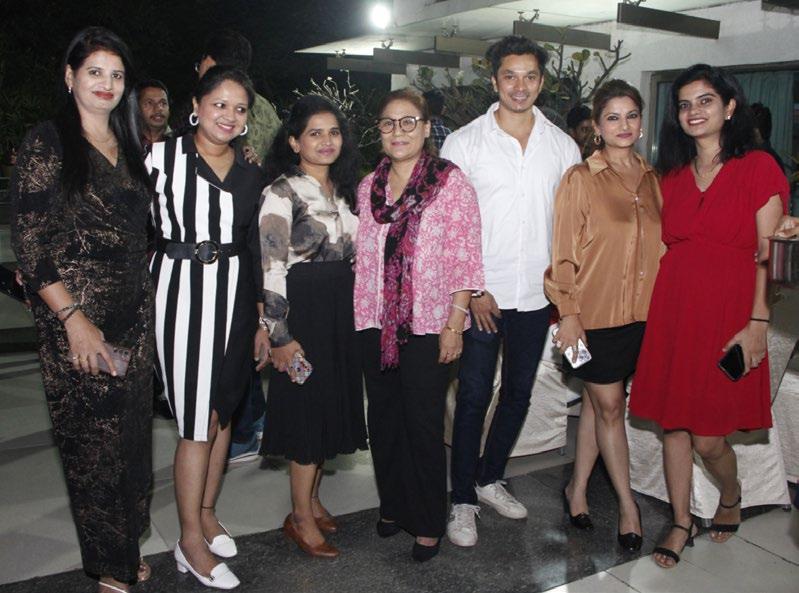

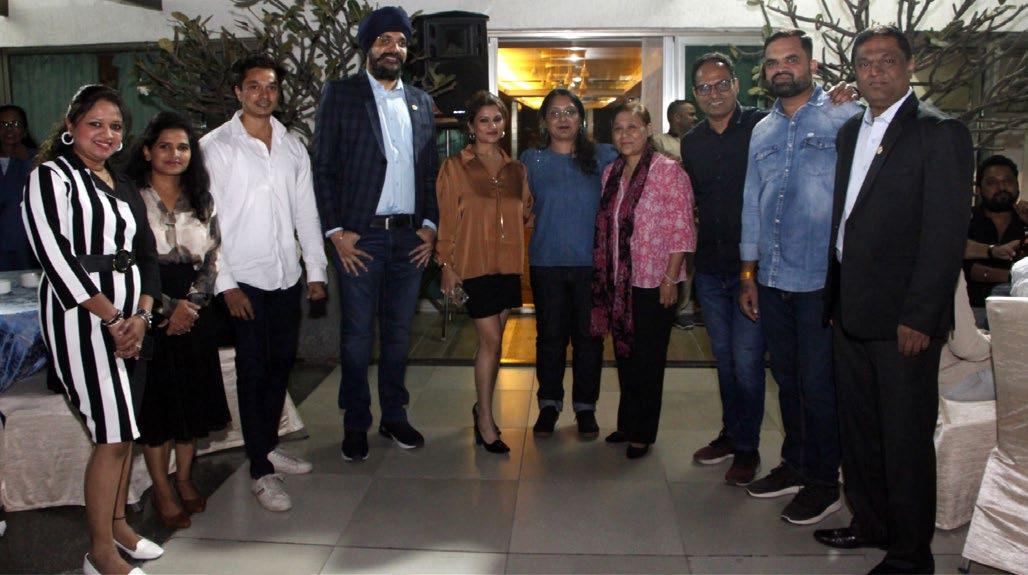
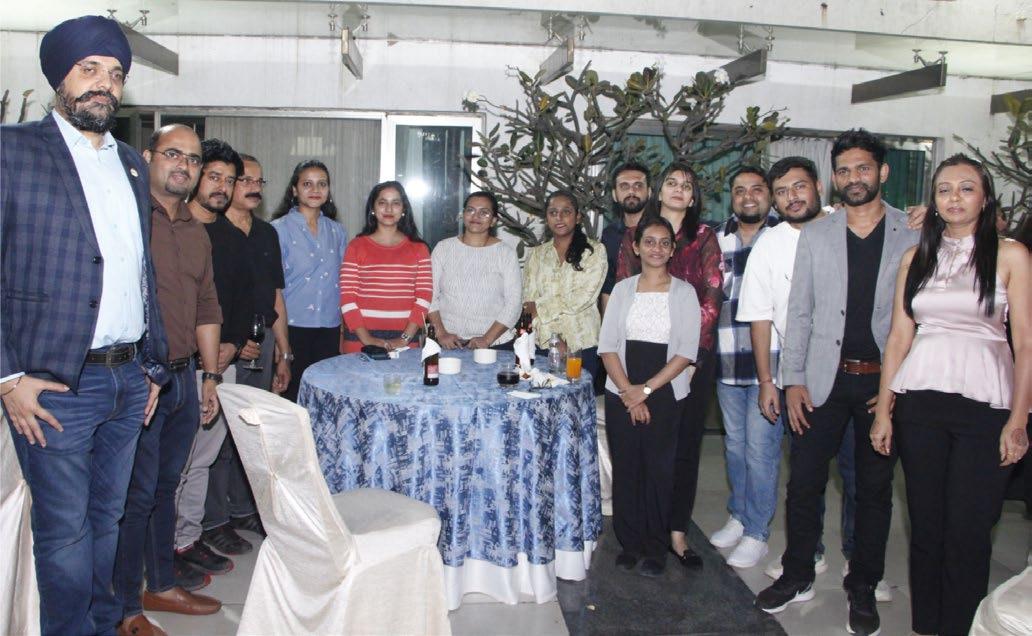
tuned for more such moments, as these two industry leaders continue to strengthen their ties and celebrate their successes together.
With their sights set on the future, ATPI India and Turkish Airlines are excited to see what the future holds, and they look forward to sharing their journey with their clients and partners.
MMT


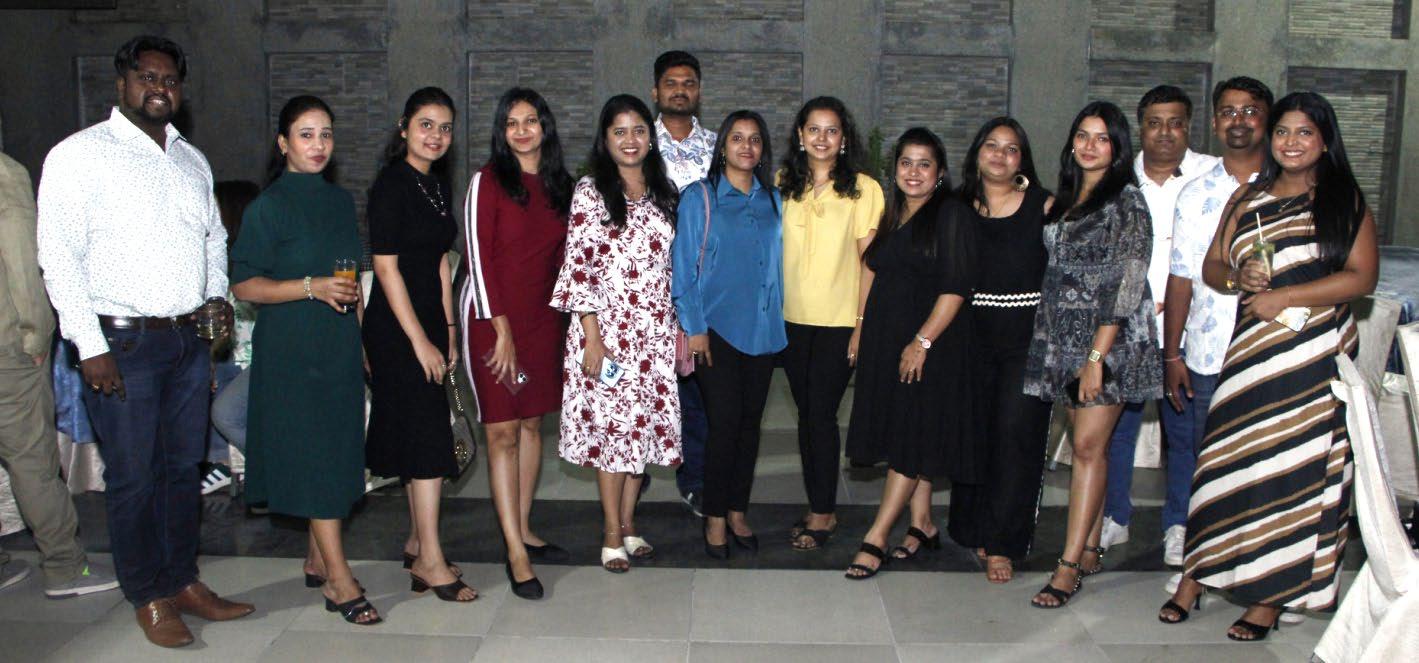


The Indian maritime industry is poised for growth and modernization; however, it would be advisable adopting the ‘PPP’ models for ensuring favourable growth prospective over a period of time, say industry stalwarts.
As the country continues to enhance its cargo and logistics supply chain, the maritime sector is becoming an essential enabler of economic growth and international trade. By focusing on innovation and efficiency, India can unlock the full potential of its vast coastline and play a key role in shaping global maritime trade in the years to come.
The continued expansion and modernization of ports are vital for improving India’s global competitiveness.
Between 2014-15 and 2023-24, major ports increased their annual cargo-handling capacity from 871.52 million tonnes to 1,629.86 million tonnes, reflecting an impressive growth of 87.01%. In the financial year 2024 alone, Indian ports managed 819.22 million tonnes of cargo, a 4.45% rise from the previous year.
However, while the industry grows one needs to critically assess the progress on ground realities so as to set timelines across the sector.
The Indian government has launched several initiatives to bolster port infrastructure, including the Sagarmala Project (launched in 2015) and the National Perspective Plan for port development. Under this initiative, projects such as the expansion of the Jawaharlal Nehru Port Trust (JNPT) and the construction of the new Vizhinjam International Container Transshipment Terminal in Kerala are set to significantly boost capacity and efficiency.
Private sector participation is another catalyst
for growth in port development. Companies such as Adani Ports, JSW Infrastructure, and others have taken the lead in modernizing ports and providing world-class facilities. This has led to higher throughput capacities, better cargo handling efficiencies, and faster turnaround times for vessels.
However, one would agree there is a huge scope for improvement and it’s easier said than done.
The key to improving the competitiveness of Indian ports lies in enhancing the efficiency of cargo handling. India’s ports are making significant strides by integrating digital technologies and advanced logistics systems.
Automation of cargo handling at ports is becoming increasingly important. Major ports such as JNPT, Mundra Port, and Chennai Port have implemented automated cargo handling systems that reduce manual intervention, optimize cargo movement, and increase throughput. The use of Artificial Intelligence (AI), the Internet of Things (IoT), and Big Data is also transforming port operations, enabling better cargo tracking, predictive maintenance, and enhanced inventory management.
In addition, the Port Community System (PCS), a digital platform for all stakeholders in the maritime supply chain, allows real-time data exchange between port operators, customs, shipping companies, and logistics providers, fostering transparency, reducing delays, and simplifying logistics processes. The introduction of e-delivery
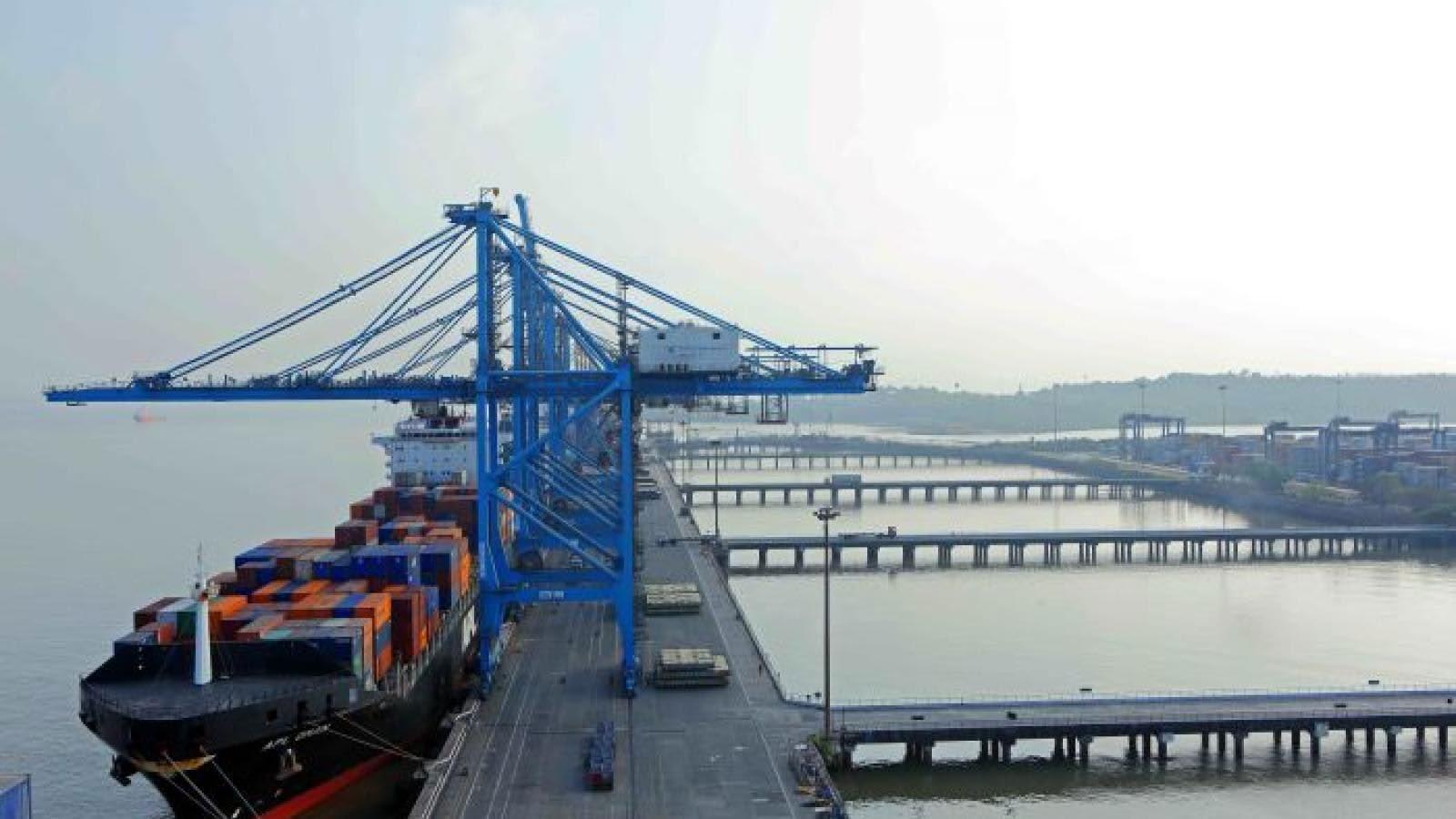
orders and electronic data interchange has further streamlined the flow of goods.
India’s maritime sector is not only crucial to domestic economic activities but also to its role in global trade. The rapid growth of e-commerce, as well as shifting supply chain patterns, have led to a substantial rise in demand for efficient cargo and logistics solutions.
The transition from bulk cargo to containerized cargo is another significant trend that has reshaped Indian ports.
In the current financial year (April-November 2024), the Indian major ports have already handled around 549.47 million tonnes of cargo as compared to 535.61 million tonnes during the same period of previous year i.e. an increase of 2.59%.
98 port modernisation projects costing over INR 32,000 crores have been completed so far which have increased the annual port capacity by more than 230 MTPA.In terms of efficiency, the Major Ports of the country have witnessed significant improvement over the years which has been
globally recognised.
According to World Bank’s Logistics Performance Index (LPI) Report published in 2023, India has secured 38th position out of 139 countries in 2023, up from 44th in 2018 and 54th in 2014.
As per the report, India has achieved a low average dwell time of approximately 2.6 days at ports, which is competitive compared to many developed nations.
Turnaround Time (TRT) of major Ports has reduced from around 94 hours in FY-2013-14 to only around 48.06 hours in FY 2023-24. The average ship berth-day output and cargo handling capacity vis-a-vis FY 2014-15 have improved by 52% and 87% respectively.
Major Ports in India are witnessing double digit annual growth and as per the recent World Bank’s Logistics Performance Index Report, India has moved up from 44th rank in the International Shipment Category in year 2019 to 22nd Rank in 2023.
In timeliness of shipment delivery, the country witnessed a 17-place jump in ranking from 52 in 2018 to 35 in 2023.
As a result, Indian ports are gradually becoming
• Cargo traffic at 12 major Indian ports increased by 6.8% in June, reaching 69.08 million tonnes (MT), with Jawaharlal Nehru Port and Cochin Port showing the highest growth at 15.12%.
• In 2023-24, major Indian ports improved their container turnaround time to 22.57 hours, outperforming global standards, resulting in earnings of Rs. 1,570 crore (US$ 188 million) for Paradip Port, which saw a 21% increase in net surplus, while Jawaharlal Nehru Port reported a net surplus of Rs. 1,263.94 crore (US$ 151 million).
• Adani Ports and Special Economic Zone Ltd. has secured a five-year operation and maintenance contract at Kolkata Port, which will help the company enhance synergies with its transshipment hubs in Colombo and Vizhinjam.
• India plans to establish a new shipping company to expand its fleet by at least 1,000 ships in the next decade, aiming to reduce freight costs and capture more revenue from increasing trade, with joint ownership by state-run oil, gas, and fertilizer companies, along with the state-run Shipping Corporation of India and foreign companies, targeting a reduction of at least one-third in foreign freight outgoings by 2047.
• India’s 12 major ports handled 819.227 million tonnes of cargo in FY24, a 4.45% increase from 784.305 million tonnes in FY23, driven by strong growth in iron ore, raw fertilizer, coking coal, and container shipments, with Jawaharlal Nehru Port Authority handling over half of the total container volumes.
• Paradip Port in Odisha emerged as India’s largest major port in terms of cargo volumes, handling 145.38 million tonnes in FY24, surpassing Deendayal Port Authority in Gujarat for the first time in its 56-year history, driven by improved operational
efficiency, record coastal shipping traffic, and increased thermal coal shipping.
• Adani Group plans US$ 3 billion investment over 3-5 years to expand global ports capacity, targeting strategic acquisitions in Europe, Africa, and Southeast Asia to increase revenue from overseas ports to 20-25% and support the India-Middle EastEurope Economic Corridor.
• On February 2023, sanctioned projects under PPP include upgrading JNPA Hospital to a 100-bed multi-specialty hospital (US$6.8 million), developing Berth No.13 at Deendayal Port for handling clean cargo (US$23.8 million), and mechanizing NCB-III at V.O. Chidambarnar Port for dry bulk cargo (US$37.8 million).
• Additionally, operations and maintenance of Berth Nos. 10 & 11 at Mormugao Port, Goa (US$19.9 million), and the development of Mumbai Marina at Prince’s Dock of Mumbai Port Authority (US$82.2 million) were approved under PPP arrangements in February 2023.
• On March 15, 2024, The Ministry of Ports, Shipping and Waterways approved Rs 645 crore (US$ 77.79 million) for 10 new waterways projects on the Brahmaputra in Assam, enhancing connectivity, boosting river tourism, and facilitating public commute, all under the Sagarmala programme.
• In March 09, 2024, India’s trade in container shipments experienced notable growth, totaling nearly 1.9 million TEUs, marking a 5% increase from January. Mundra Port managed 635,000 TEUs, Nhava Sheva Port handled 565,000 TEUs, and PSA Mumbai processed 158,000 TEUs.
• India has plans to invest US$ 82 billion in port projects by 2035.

key hubs for transshipment in the South Asian region. The opening of new deep-draft terminals and advanced cargo handling equipment allows for faster loading and unloading of goods, which is critical for time-sensitive industries like electronics and pharmaceuticals.
The need for efficient last-mile connectivity and urban logistics solutions has become paramount. This has spurred growth in the development of inland container depots (ICDs), warehouses, and cold chain infrastructure. In addition, logistics parks equipped with state-of-the-art facilities are emerging near key ports and industrial zones, ensuring smooth distribution channels and reducing delays in cargo movement.
The future of logistics in India will likely be shaped by the rapid rise of e-commerce, which demands swift and reliable delivery systems. Companies like Amazon and Flipkart are already creating robust logistics networks, utilizing advanced warehouse management technologies, and investing in AIdriven supply chain management platforms to ensure faster delivery times.
As environmental concerns gain prominence, the Indian maritime sector is beginning to focus on sustainability. Initiatives to promote green shipping include the adoption of cleaner fuels, improved ballast water management, and energy-
efficient port operations.The Indian government has set ambitious targets under the National Action Plan on Climate Change to reduce the carbon footprint of the maritime sector Several Indian ports have begun to incorporate renewable energy sources such as solar and wind power. At the same time, shipping companies are adopting eco-friendly ships to comply with international environmental standards.
Stalwarts in the industry agree that there has been a change in government’s approach towards maritime industry for it was long due and the Indian maritime industry is on the cusp of a major transformation taking its own time for the trajectory. The focus on improving port infrastructure and logistics networks in ,all likelihood ,should position India to enhance its role as a significant player in global trade.
Many in the industry have been vocal about their concerns, stating that while the development of smart ports, digital cargo management systems, and multimodal transport solutions (which are at a nascent stage and have yet to take off) is appreciated, it remains to be seen when it will help improve India’s export competitiveness.
Moreover, according to experts, as India nears its role as the world’s third-largest economy, its minimal share in global shipbuilding (0.07%) and ship ownership (1.2%) exposes strategic and economic risks. Relying on foreign vessels for 95% of trade has led to substantial forex outflows. With China, South Korea, and Japan dominating 93% of global shipbuilding, urgent policy reforms are needed to align India’s maritime sector with its economic aspirations.
Industry leaders are of the view that as the industry evolves, the collaboration between public and private entities, coupled with a commitment to sustainability, will shape the future of Indian maritime commerce, contributing to the broader economic development of the nation. With these developments, the Indian maritime industry is set to chart a course toward a prosperous and connected future.
India’s maritime sector is not only crucial to domestic economic activities but also to its role in global trade. The Indian cargo and logistics sector, a crucial backbone of the nation’s economic growth, has long been a subject of attention due to its vast potential and significant challenges.
Current State of the Indian Cargo and Logistics Sector
India’s logistics sector is vast, contributing around 13-14% of the country’s GDP, which is relatively high compared to the global average of 8-9%. The industry encompasses a wide array of services, including road, rail, air, and sea transport, warehousing, freight forwarding, and last-mile delivery. Despite the sector’s size, it faces inefficiencies that inflate the cost of logistics, making it a crucial area of focus for policymakers, businesses, and industry stakeholders.
Infrastructure Deficits and Connectivity
One of the most significant challenges facing India’s cargo and logistics sector is inadequate infrastructure. While the country has made considerable strides in expanding its transport networks—such as developing express highways, upgrading ports, and building dedicated freight corridors—several gaps remain.
For instance, India’s roads, which handle about 60% of total freight, are congested and poorly maintained in several areas. Traffic bottlenecks, inadequate cargo handling facilities at ports, and poor rail network connectivity hamper the efficiency of goods movement.
Moreover, urban logistics faces challenges related to inadequate last-mile delivery infrastructure and unorganized warehousing practices. Poor intermodal connectivity—where different modes of transport (road, rail, air, and sea) are not seamlessly integrated—adds to the inefficiencies.
India’s logistics costs, at approximately 13-14% of GDP, are significantly higher than those of developed economies, where logistics costs are typically below 10%. The high cost of logistics in India can be attributed to several factors, including inefficient transportation, complex regulatory frameworks, fragmented supply chains, and poor logistics management practices. Additionally, long dwell times at ports, outdated customs procedures, and cumbersome documentation further exacerbate the cost burden.
Regulatory issues and policy fragmentation are another significant challenge. Multiple agencies at the state and central levels govern the logistics sector, often resulting in overlapping regulations, delays in clearances, and lack of coordination. The Goods and
Services Tax (GST) has simplified tax structures, but state-specific regulations still create bottlenecks, especially in interstate freight movement.
Despite these challenges, the Indian cargo and logistics sector is witnessing an increasing level of investment and transformation, driven by both governmental initiatives and private sector innovation. Several opportunities exist that, if capitalized on, could significantly improve the performance of the sector.
The Indian government has launched several initiatives aimed at improving logistics efficiency, the most notable being the National Logistics Policy (NLP), which seeks to reduce logistics costs, enhance infrastructure, and streamline regulations. Furthermore, the Dedicated Freight Corridors (DFC) project, which focuses on the development of dedicated rail corridors for freight transport, are expected to help reduce transportation time and increase the volume of goods moved by rail.
The Sagarmala Project, another government initiative, focuses on port development, modernization, and improving port connectivity, while the Bharatmala Project aims to create a more efficient national highways network. These projects, though aimed at addressing the infrastructure deficits that currently plague the sector, are yet to show their effects.
The role of private players in transforming India’s logistics sector is undeniable. Large logistics companies and infrastructure developers have been investing in cutting-edge technologies and modern infrastructure, creating efficient supply chains that can meet global standards. The expansion of multimodal logistics parks and warehouses in key cities like Mumbai, Delhi, and Bangalore is enabling faster and more efficient movement of goods.
Private investment in ports, such as the modernization of major ports like Jawaharlal Nehru Port Trust (JNPT) and the development of new ports is also a step in the right direction. The private sector’s involvement ensures faster decision-making, implementation, and access to the latest technology.
India’s cargo and logistics sector has immense potential, but it is currently constrained by infrastructure challenges, high costs, and fragmented practices. The country’s rapid economic growth, coupled with governmental and private sector initiatives, presents an opportunity to overcome these barriers.

The Author Capt (Dr) Rajesh Tandon CEO, FOSMA
The maritime industry remains beyond doubt a vital pillar of global trade and commerce. But there is a widespread lack of awareness about the maritime sector within the nation, especially in the interior tier2 and tier-3 cities, which poses a serious hindrance to getting suitable talent to consider the sector for a career.
This paper therefore aims to identify some of the key challenges posed by the lack of awareness, as well as to study proposed solutions.
Perception vs. Reality
More often than not, the only press coverage the industry gets is negative. The media predominantly portrays maritime incidents such as maritime accidents, piracy, and pollution incidents, which paint the industry and the potential employment opportunities negatively, which in turn dissuades youth from considering careers within the sector.
The reality however, as the industry leaders will tell, is far from it. The maritime industry is integral to global trade and commerce, and offers a vast array of career opportunities beyond seafaring.
Employment Opportunities
The maritime industry, considering all its verticals, collectively provides the highest number of jobs globally. These jobs span various sectors, including but not limited to, maritime commerce, port operations, coastal and inland shipping, intermodal logistics, oceanography, etc. to name a few.
The sector plays a pivotal role in the global supply chain, ensuring the smooth flow of goods.
To effectively dispel any false perceptions that may stem from ignorance we need to approach this challenge in a structured manner.
Integrating Maritime Education in High School Curriculum
47% of the Indian population is below the age of 25, of which 24% is below 15. Perhaps the easiest way to create awareness about the sector then would be by introducing the maritime sector’s significance in highschool curricula.
• Highlight how the maritime industry is integral to our daily lives
• Emphasize the role of maritime transportation in the delivery of goods.
• Showcase the importance of ports in trade and commerce.
• Explain coastal and inland shipping’s contribution to regional development.
• Introduce intermodal and multimodal opportunities within the sector.
The list can be endless.
AWARENESS SPARKS’ INTEREST… By educating students at the school level about the maritime sector’s importance, we generate curiosity and interest. Encouraging students to explore career opportunities in maritime commerce, logistics, and related fields will
create awareness of the opportunities and dispel the negative perceptions that stigmatise the possibilities.
Integrating maritime education into high school curricula is the first step toward rectifying this issue. Social media is a powerful tool, and influencers should be engaged to further generate interest in it.
Once awareness is created, the seed is sown. As the next stage, introduce maritime and environmental studies as an elective in higher secondary syllabi.
This would invariably encourage students to delve deeper into maritime-related subjects. With growing unemployment in other industrial sectors, students can make informed choices to consider this highly lucrative seafaring profession, along with a career path beyond sailing.
By fostering awareness and interest in maritime careers, and a coherent road map beyond, we can ensure a steady supply of talented individuals to sustain the industry’s growth and development. India has this great opportunity to develop a skilled workforce equipped to address the sector’s evolving challenges.
Proper education, applying a structured approach, including a high-level understanding of the environmental concerns, will fuel the growth potential for serving the industry globally.
With the above foundation, career counselling sessions at school completion stage will garner far better traction with more students making informed choices aligned with their interests.
Key Takeaways:
• Awareness: Promote the importance of maritime trade, ports, logistics, and environmental sustainability.
• Employment: Highlight diverse career opportunities beyond traditional seafaring roles.
• Education: Integrate maritime and environmental studies into school curricula.
• Skill Development: Create a skilled workforce through education-industry partnerships and vocational programs.
• National Policy Alignment: Align efforts with India’s maritime policies and global environmental standards.
By taking these steps, India will have a distinct advantage to position itself as a leader in maritime manpower, providing a workforce with valuable skills that contribute to the growth and sustainability of the sector.
II. Detailed Action Plan for Engaging the Ministry of Education on Introducing Maritime & Environmental Studies
Objective
The primary objective is to make a strong case for integrating Maritime & Environmental Studies into the secondary and higher secondary education curricula in India, focusing on creating awareness about the maritime sector, its career opportunities, and the importance of environmental sustainability within the sector. Led by Ministry of Shipping this initiative would should involve collaboration with the Ministry of Trade and Commerce, Ministry of Labour, and the Ministry of Education.
Key Areas to Address
• Raising Awareness About the Maritime Sector
• Highlighting Employment Opportunities
• Introducing Maritime and Environmental Studies into Curricula
• Building a Skilled Workforce for the Sector
• Aligning with National and Global Maritime and Environmental Policies
1. Raising Awareness About the Maritime Sector Action Steps
Stakeholder Engagement:
Collaborate with the Ministry of Shipping and Ministry of Trade & Commerce to understand the role of the maritime sector in India’s economy and its global significance. Present data on the economic impact, employment opportunities, and the need for skilled professionals in the industry.
Public Awareness Campaigns:
Launch a national campaign to address misconceptions about the maritime sector. Use multimedia platforms (TV, radio, social media influencers) to highlight the importance of the maritime industry in global trade, regional economic development, and job creation.
Engage Industry Leaders:
Bring in maritime industry leaders and experts to speak at school and community events, focusing on the diverse career paths available in the sector. Partner with the Ministry of Labour to highlight the diverse job roles in the sector beyond seafaring—such as port operations, logistics, supply chain management, marine engineering, etc.
Focus on Environmental Sustainability:
Highlight the growing intersection between maritime operations and environmental concerns, such as reducing carbon emissions, sustainable shipping

practices, and coastal protection. Collaborate with the Ministry of Environment and Forests to emphasize the environmental aspects of the maritime industry.
Expected Outcome
• Increased general awareness about the maritime sector.
• Positive media coverage that highlights career opportunities and the importance of the maritime industry to national growth.
• Positive shifts in public perception of the industry.
2. Highlighting Employment Opportunities
Action Steps
Mapping Career Paths:
Create a comprehensive guide for students and parents, detailing the variety of career paths within the maritime sector, including port operations, logistics, marine technology, environmental management, marine engineering, etc.
Data-Driven Insights:
Provide data that demonstrates the number of jobs the maritime sector generates globally and the specific employment opportunities in India. Highlight the growing demand for skilled professionals due to expanding trade and the need for port infrastructure development.
Engagement with Industry Partners:
Partner with maritime companies, trade organizations, and international bodies to provide internships, scholarships, and mentorship programs for students interested in the sector.
Expected Outcome
Enhanced understanding of the diversity of jobs in the maritime industry.
Increased interest in pursuing maritime-related careers among students.
More students opting for maritime career paths due to clearer, well-supported opportunities.
3. Introducing Maritime and Environmental Studies into Curricula
Action Steps
Develop Curriculum Framework:
Collaborate with the Ministry of Education to design a curriculum that introduces maritime and environmental studies at the secondary and higher secondary levels. The curriculum should cover both basic maritime knowledge and environmental sustainability within the maritime context.
Pilot Program:
Roll out a pilot program in select schools, especially in coastal and hinterland areas, to introduce basic maritime education in subjects like geography, economics, and environmental studies. This pilot can include modules on shipping logistics, port operations, marine pollution, and maritime safety.
Elective Courses in Higher Secondary Education:
Introduce elective subjects related to maritime and environmental studies in higher secondary education. This could be part of the sciences, social sciences, or vocational courses, where students can specialize in the maritime sector or environmental protection.
Workshops and Training for Educators:
It is extremely essential that the Teachers & Educators are themselves familiarised with the sector and its importance. Conduct workshops for teachers on how to incorporate maritime and related environmental education into their teaching. Provide materials,
expert speakers, and digital resources to support their teaching efforts.
Use of Technology:
Develop an online platform or mobile app in collaboration with educational institutions, where students can access e-learning modules on maritime topics, such as marine ecology, shipping technology, sustainable port practices, etc.
Expected Outcome
A structured introduction of maritime education in schools, creating long-term awareness and interest.
Establishment of maritime and environmental studies as formal electives, giving students the opportunity to specialize.
Improved teaching standards with trained educators equipped to deliver maritime-related content.
Building a Skilled Workforce for the Sector
Action Steps
Industry-Education Partnerships & Vocational Training Programs:
Create a partnership framework between maritime industry players and educational institutions to bridge the skills gap. This could include tailored programs for maritime engineering, logistics, port management, environmental management and seafaring etc.
This could include development of vocational training programs, say in collaboration with the Ministry of Labour tailored for maritime engineering, logistics, port management, environmental compliance management, the list is endless.
Internship and Apprenticeship Programs:
Facilitate internship and apprenticeship opportunities for students within the maritime sector, beyond traditional sea-time for seafaring jobs. These could be arranged through collaborations with shipping companies, port authorities, and environmental NGOs working within the maritime industry.
Skill Development Initiatives:
Work with the relevant authorities to design courses that train youth in critical maritime skills such as navigational operations, marine engineering, maritime law, supply chain management, and environmental protection.
Expected Outcome
Development of a well-trained, industry-ready workforce.
Increased number of skilled professionals entering the maritime sector.
Reduction in skills gaps within the maritime industry, leading to improved efficiency and competitiveness.
5. Aligning with National and Global Maritime and Environmental Policies
Action Steps
National Maritime Policy:
Align the initiative with India’s National Maritime Policy and make a case for including maritime education as a key component of the policy’s implementation. Ensure that the policy supports and incentivizes educational institutions to develop specialized maritime programs.
Environmental Commitments:
Ensure that maritime education integrates with national and international environmental commitments, such as the International Maritime Organization (IMO) regulations on sustainability. This would make students aware of their responsibilities in driving ecofriendly maritime practices.
Promote Global Opportunities:
Highlight the global nature of the maritime industry and ensure that the educational framework prepares students for international opportunities. Emphasize India’s role in global shipping and trade, which will make Indian youth competitive on the world stage.
Expected Outcome
Alignment of educational initiatives with national and global maritime and environmental policies.
A more globally competitive maritime workforce.
Convergence of national interests in trade, labor, and education for economic growth and environmental sustainability.
Conclusion
The introduction of Maritime & Environmental Studies at secondary and higher secondary levels will not only create awareness of the sector’s importance but also prepare the youth for a growing and dynamic industry. By educating students early on about the vast opportunities within the maritime sector, dispelling misconceptions, and providing career pathways, India can develop a highly skilled, sustainable, and globally competitive maritime workforce.
How often do we hear about a tale of a bereaved child in a city like Mumbai? Make no mistake, good Samaritans still exist!
In a quiet corner of Lonavala, nestled at the foot of the famous Bhaje Caves, a small but transformative initiative has been changing lives for decades. This is the story of SAMPARC (Social Action for Manpower Creation), an organization founded by Amitkumar Banerjee, a man whose journey from the dusty roads of Gaya in Bihar to the bustling streets of Bombay in the late 1980s would lead him to become a beacon of hope for thousands of vulnerable children across India.
It all began in the early 1990s with just seven orphaned children under his care. Banerjee’s vision was simple yet profound—provide a safe haven, quality education, vocational training, and above all, a future filled with opportunities. Over the years, his efforts have expanded exponentially, transforming SAMPARC into a shelter for over 520 children, many of whom come from the most challenging backgrounds. These include orphans, children of socially victimized women, the destitute, and even the children of convicts.
“SAMPARC was born with a small dream,” Banerjee reflects, “but today, we offer more than just shelter. We offer hope and a chance at a new life.”
At Balgram, the heart of SAMPARC’s operations, the children are not defined by their difficult

pasts. They are given the tools to grow, not just physically and mentally, but also emotionally, free from the social stigmas they might have faced in the outside world.
The latest chapter in this remarkable journey is a shining example of how SAMPARC’s approach is transforming the lives of young girls from underprivileged backgrounds. Five tribal women from Balgram—Guddi, Sarasvati, Susti, Sakshi, and Payal—have recently been selected for GP Rating training at the prestigious NUSI Maritime Academy in Goa. All in their teens and having successfully passed their Higher Secondary Certificate (HSC) exams, the five young women are now preparing to join the academy in the coming session.

“Now we will also be donning the uniform and shall be respected,” says Guddi, her voice filled with determination. Sakshi, with a glint in her eye, adds, “We saw such things happening only in films, but God has been kind enough, and we will excel in our chosen field.” Their words are filled with a sense of pride and ambition, a far cry from the limited opportunities they once faced.
Milind Kandalgaonkar, General Secretary of the National Union of Seafarers of India (NUSI), confirms the selection of these five young women.
“Yes, NUSI has selected them for GP Rating training at our esteemed NUSI Maritime Academy in Goa. This opens up a world of promising career opportunities in the maritime sector,” he says.
Kandalgaonkar, who first visited SAMPARC’s Balgram with his wife, was deeply moved by the organization’s dedication to child development. “Their commitment is truly commendable. SAMPARC is a living testament to the power of social action in transforming young lives. What they are doing is not just admirable—it’s transformative.”
This partnership between SAMPARC and NUSI is more than just a professional collaboration;
it is a symbolic bridge that connects two worlds. It illustrates how organizations can come together to provide tangible pathways for children, particularly those from disadvantaged sections of society, to build successful careers. It also highlights how sometimes, a single act of kindness, a small opportunity, can unlock a world of possibilities for someone who has never even dreamed of such a future.
For the young women of SAMPARC, this opportunity is not just a chance to work in the maritime industry; it’s a chance to rewrite their stories, to rise above the circumstances of their birth, and to embrace a future where their aspirations are no longer limited by their past.
The work of Amitkumar Banerjee and his team at SAMPARC is a testament to the impact of dedicated social action in shaping the future of India’s youth. And as Guddi, Sarasvati, Susti, Sakshi, and Payal prepare for their new journey, they are not just stepping into a new career— they are stepping into a future they once thought impossible.
Organized by IME in collaboration with Graphic Era University, the International Maritime Conference promises to address the pressing challenges and transformative opportunities in commercial shipping.
Graphic Era University, one of the top-notch universities in India known for its commitment to excellence and innovation in association with Integrated Maritime Exchange, country’s pioneering AI-driven platform dedicated to transforming the trillion-dollar maritime industry has organised ‘Aarohan 2025’ The International Maritime Conference, on Saturday March 22, 2025 at Dehradun, Uttarakhand.
With its theme, “Bridging the Gap Between Academy and Industry and AI in Shipping,” the conference focuses on exploring cutting-edge technologies that enhance efficiency, decision-making, and sustainability along with fostering collaboration and innovation to equip the industry for the future providing an opportunity for stakeholders to discover the latest advancements, share best practices.
The serene city of Dehradun is all set to host the landmark event for, Aarohan 2025 promises to bring together global leaders, industry stalwarts, academics, and innovators in commercial shipping to address the pressing challenges and transformative opportunities in the sector
Discussions will focus on emerging AI technologies, including predictive analytics, autonomous shipping, advanced laytime calculators, and digital twin simulations that are reshaping traditional practices.
Aarohan 2025 is set to be a milestone in maritime discourse for Integrated Maritime Exchange, the force behind Aarohan, is co-founded by Capt Kunal Narayan Uniyal, a renowned maritime expert with a rich legacy in commercial shipping, and Vikas Gadoo, a visionary technology leader with a proven track record in building transformative tech solutions. Together, they bring unparalleled expertise and a shared commitment to revolutionizing the maritime industry. Their mission to develop a robust, AI-driven platform for commercial shipping operations has positioned IME as a trailblazer in the field, spearheading innovation and digitalization in a trillion-dollar industry. With their leadership, IME continues to set new benchmarks in efficiency, transparency, and technological advancement
MMT
i) Global Perspectives: Esteemed speakers and panellists from around the globe will share insights on market trends, regulatory updates, and innovative technologies.
ii) Discussion: AI-Driven Shipping Platforms
iii) Academia Meets Industry: Interactive panels and workshops ensuring that maritime education is aligned with the dynamic needs of the industry.
iv) Networking Opportunities: Aarohan 2025 offers a platform to connect with shipowners, charterers, brokers, operators, educators, and technology providers, fostering meaningful collaborations.



